 Belt and Road Initiative and related projects | |
| Abbreviation | BRI |
|---|---|
| Formation | 2013 2017 (Forum) 2019 (Forum) 2023 (Forum) |
| Founder | |
| Legal status | Active |
| Purpose | Promote economic development and inter-regional connectivity |
| Location |
|
| Website | www |
| The Silk Road Economic Belt and the 21st-century Maritime Silk Road | |||||||||||||||
|---|---|---|---|---|---|---|---|---|---|---|---|---|---|---|---|
| Simplified Chinese | 丝绸之路经济带和21世纪海上丝绸之路 | ||||||||||||||
| Traditional Chinese | 絲綢之路經濟帶和21世紀海上絲綢之路 | ||||||||||||||
| |||||||||||||||
| One Belt, One Road (OBOR) | |||||||||||||||
| Simplified Chinese | 一带一路 | ||||||||||||||
| Traditional Chinese | 一帶一路 | ||||||||||||||
| |||||||||||||||
.svg.png.webp) |
|---|
|
|
The Belt and Road Initiative (BRI, or B&R[1]), known within China as the One Belt One Road (Chinese: 一带一路; pinyin: Yīdài Yīlù) or OBOR/1B1R for short,[2] is a global infrastructure development strategy adopted by the Chinese government in 2013 to invest in more than 150 countries and international organizations.[3] It is considered a centerpiece of the Chinese leader Xi Jinping's foreign policy.[4] The BRI forms a central component of Xi's "Major Country Diplomacy" (Chinese: 大国外交) strategy, which calls for China to assume a greater leadership role for global affairs in accordance with its rising power and status.[5] It has been compared to the American Marshall Plan. As of August 2023, 155 countries were listed as having signed up to the BRI.[6] The participating countries include almost 75% of the world's population and account for more than half of the world's GDP.[7]: 192
Xi originally announced the strategy as the "Silk Road Economic Belt" during an official visit to Kazakhstan in September 2013.[8][9][10] "Belt" is short for the "Silk Road Economic Belt", referring to the proposed overland routes for road and rail transportation through landlocked Central Asia along the famed historical trade routes of the Western Regions; whereas "road" is short for the "21st Century Maritime Silk Road", referring to the Indo-Pacific sea routes through Southeast Asia to South Asia, the Middle East and Africa. [11] Examples of Belt and Road Initiative infrastructure investments include ports, skyscrapers, railroads, roads, bridges, airports, dams, coal-fired power stations, and railroad tunnels.
The initiative was incorporated into the Constitution of the Chinese Communist Party in 2017.[4] The Xi Jinping Administration describes the initiative as "a bid to enhance regional connectivity and embrace a brighter future."[12] The project has a target completion date of 2049,[13] which will coincide with the centennial of the People's Republic of China (PRC)'s founding.
Numerous studies conducted by the World Bank have estimated that BRI can boost trade flows in 155 participating countries by 4.1 percent, as well as cutting the cost of global trade by 1.1 percent to 2.2 percent, and grow the GDP of East Asian and Pacific developing countries by an average of 2.6 to 3.9 percent.[14][15] According to London-based consultants Centre for Economics and Business Research, BRI is likely to increase the world GDP by $7.1 trillion per annum by 2040, and that benefits will be "widespread" as improved infrastructure reduces "frictions that hold back world trade". CEBR also concludes that the project will be likely to attract further countries to join, if the global infrastructure initiative progresses and gains momentum.[16][17][18]
Supporters praise the BRI for its potential to boost the global GDP, particularly in developing countries. However, there has also been criticism over human rights violations and environmental impact, as well as concerns of debt-trap diplomacy resulting in neocolonialism and economic imperialism. These differing perspectives are the subject of active debate.[19]
Objectives
Background
The initiative was unveiled by general secretary of the Chinese Communist Party (CCP) and paramount leader Xi Jinping in September and October 2013 during visits to Kazakhstan and Indonesia,[10] and was thereafter promoted by Chinese premier Li Keqiang during state visits to Asia and Europe. The initiative was given intensive coverage by Chinese state media, and by 2016 had become often featured in the People's Daily.[20]
The stated objectives are "to construct a unified large market and make full use of both international and domestic markets, through cultural exchange and integration, to enhance mutual understanding and trust of member nations, resulting in an innovative pattern of capital inflows, talent pools, and technology databases."[21] The Belt and Road Initiative addresses an "infrastructure gap" and thus has the potential to accelerate economic growth across the Asia Pacific, Africa and Central and Eastern Europe. A report from the World Pensions Council (WPC) estimates that Asia, excluding China, requires up to US$900 billion of infrastructure investments per year over the next decade, mostly in debt instruments, 50% above current infrastructure spending rates.[22] The gaping need for long term capital explains why many Asian and Eastern European heads of state "gladly expressed their interest to join this new international financial institution focusing solely on 'real assets' and infrastructure-driven economic growth".[23]
The initial focus has been infrastructure investment, education, construction materials, railway and highway, automobile, real estate, power grid, and iron and steel.[24] Already, some estimates list the Belt and Road Initiative as one of the largest infrastructure and investment projects in history, covering more than 68 countries, including 65% of the world's population and 40% of the global gross domestic product as of 2017.[25][26] The project builds on the old trade routes that once connected China to the west, Marco Polo and Ibn Battuta's routes in the north and the maritime expedition routes of Ming dynasty admiral Zheng He in the south. The Belt and Road Initiative now refers to the entire geographical area of the historic "Silk Road" trade route, which has been continuously used in antiquity.[27] Development of the Renminbi as a currency of international transactions, development of the infrastructures of Asian countries, strengthening diplomatic relations whilst reducing dependency on the US and creating new markets for Chinese products, exporting surplus industrial capacity, and integrating commodities-rich countries more closely into the Chinese economy are all objectives of the BRI.
While some countries, especially the United States, view the project critically because of possible Chinese influence, others point to the creation of a new global growth engine by connecting and moving Asia, Europe and Africa closer together.[28]
The only G7 industrial country Italy has been a partner in the development of the project since March 2019, but declared its intention in July 2023 to quit the BRI.[29] Prime Minister Giorgia Meloni stated that the project was not of any real benefit to Italy's economy.[30] According to estimates, the entire project today affects more than 60% of the world's population and approximately 35% of the global economy. Trade along the Silk Road could soon account for almost 40% of total world trade, with a large part being by sea. The land route of the Silk Road also appears to remain a niche project in terms of transport volume in the future.[31]
In the maritime silk road, which is already the route for more than half of all containers in the world, deep-water ports are being expanded, logistical hubs are being built and new traffic routes are being created in the hinterland. The maritime silk road runs with its connections from the Chinese coast to the south, linking Hanoi, Kuala Lumpur, Singapore, and Jakarta, then westward linking the Sri Lankan capital city of Colombo, and Malé, capital of the Maldives, and onward to East Africa, and the city of Mombasa, in Kenya. From there the linkage moves northward to Djibouti, through the Red Sea and the Suez Canal to the Mediterranean, thereby linking Haifa, Istanbul, and Athens, to the Upper Adriatic region to the northern Italian hub of Trieste, with its international free port and its rail connections to Central Europe and the North Sea.[32][33][34][35]
As a result, Poland, the Baltic States, Northern Europe, and Central Europe are also connected to the maritime silk road and logistically linked to East Africa, India and China via the Adriatic ports and Piraeus. All in all, the ship connections for container transports between Asia and Europe will be reorganized. In contrast to the longer East Asian traffic via north-west Europe, the southern sea route through the Suez Canal towards the junction Trieste shortens the goods transport by at least four days.[36][37][38]
In connection with the Silk Road project, China is also trying to network worldwide research activities.[39]
Simon Shen and Wilson Chan have compared the initiative to the post-World War II Marshall Plan.[40]
Project name

The official name for the initiative is the Silk Road Economic Belt and 21st-Century Maritime Silk Road Development Strategy (丝绸之路经济带和21世纪海上丝绸之路发展战略),[41] which was initially abbreviated as the One Belt One Road (Chinese: 一带一路) or the OBOR strategy. The English translation has been changed to the Belt and Road Initiative (BRI) since 2016, when the Chinese government considered the emphasis on the words "one" and "strategy" were prone to misinterpretation so they opted for the more inclusive term "initiative" in its translation.[42][43] However, "One Belt One Road" is still the reference term in Chinese-language media.[2]
International relations
The Belt and Road Initiative is believed by some analysts to be a way to extend Chinese economic and political influence.[26][44] Some geopolitical analysts have couched the Belt and Road Initiative in the context of Halford Mackinder's heartland theory.[45][46][47] Scholars have noted that official PRC media attempts to mask any strategic dimensions of the Belt and Road Initiative as a motivation,[48] while others note that the BRI also serves as signposts for Chinese provinces and ministries, guiding their policies and actions.[49] Academic Keyu Jin writes that while the BRI does advance strategic interests for China, it also reflects a Chinese vision of a world order based on "building a global community of shared future".[50]: 281–282
China has already invested billions of dollars in several South Asian countries like Pakistan, Nepal, Sri Lanka, Bangladesh and Afghanistan to improve their basic infrastructure, with implications for China's trade regime as well as its military influence. This project can also become a new economic corridor for different regions. For example, in the Caucasus region, China considered cooperation with Armenia from May 2019. Chinese and Armenian sides had multiple meetings, signed contracts, initiated a north–south road program to solve even infrastructure-related aspects.[51]
Military implications
A 2023 study by AidData of the College of William & Mary determined that overseas port locations subject to significant BRI investment raise questions of dual military and civilian use and may be favorable for future naval bases.[52][53]
Writing in 2023, David H. Shinn and academic Joshua Eisenman state that through the BRI, China seeks to strengthen its position and diminish American military influence, but that China's BRI activity is likely not a prelude to American-style military bases or American-style global military presence.[54]: 161
Other analysts characterize China's construction of ports which could have dual-uses as an attempt to avoid the necessity of establishing military bases.[54]: 273 According to academic Xue Guifang, China is not motivated to repeat the model of the People's Liberation Army Support Base in Djibouti.[54]: 273
Western regions
China's western regions are less developed than its coastal regions and one of China's important interests in pursuing the BRI is to increase their level of socio-economic development.[55]: 199 BRI's goals include internal state-building and stabilization of ethnic unrest for its vast inland western regions such as Xinjiang and Yunnan, linking these less developed regions, with increased flows of international trade facilitating closer economic integration with China's inland core.[56]
Leadership
A leading group was formed sometime in late 2014, and its leadership line-up publicized on 1 February 2015. This steering committee reports directly into the State Council of China and is composed of several political heavyweights, evidence of the importance of the program to the government. Then Vice-Premier Zhang Gaoli, who was also a member of the 7-man CCP Politburo Standing Committee, was named leader of the group, and Wang Huning, Wang Yang, Yang Jing, and Yang Jiechi named deputy leaders.[57]
On 28 March 2015, China's State Council outlined the principles, framework, key areas of cooperation and cooperation mechanisms with regard to the initiative.[58] The BRI is considered a central element within China's foreign policy, and was incorporated into the CCP's constitution in 2017 during its 19th Congress.[54]: 58
With regard to China and the African countries, the Forum on China-Africa Cooperation (FOCAC) is a significant multi-lateral cooperation mechanism for facilitating BRI projects.[59] The China-Arab States Cooperation Forum (CASCF) serves a similar coordinating role with regard to BRI projects in the Arab states.[59]
Membership

Countries join the Belt and Road Initiative by signing a memorandum of understanding with China regarding their participation in it. The Government of China maintains a listing of all involved countries on its Belt and Road Portal,[60] and state media outlet Xinhua News Agency puts out a press release whenever a memorandum of understanding related to the Belt and Road Initiative is signed with a new country.[61] Not counting China, there were 154 countries formally affiliated with the Belt and Road Initiative As of August 2023 according to observers at Fudan University's Green Finance and Development Center,[62] and an independent analysis from Germany from the same time also found 148 member states out of 249 political entities surveyed.[63] The Council on Foreign Relations additionally found 139 member countries as of March 2021;[64] countries that are documented as joining since then include Syria[65] and Argentina.[66] The full list of members according to the Chinese government[60] is below:
 Afghanistan[67]
Afghanistan[67] Albania[67]
Albania[67] Algeria[67]
Algeria[67] Angola[67]
Angola[67] Antigua and Barbuda[67]
Antigua and Barbuda[67] Armenia[67]
Armenia[67] Austria[67]
Austria[67] Azerbaijan[67]
Azerbaijan[67] Bahrain[67]
Bahrain[67] Bangladesh[67]
Bangladesh[67] Barbados[67]
Barbados[67] Belarus[67]
Belarus[67] Benin[67]
Benin[67].svg.png.webp) Bolivia[67]
Bolivia[67] Bosnia and Herzegovina[67]
Bosnia and Herzegovina[67]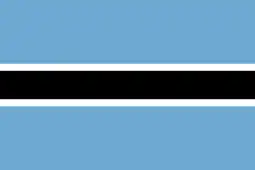 Botswana[67]
Botswana[67] Brunei[67]
Brunei[67] Bulgaria[67]
Bulgaria[67] Burkina Faso[68]
Burkina Faso[68] Burundi[67]
Burundi[67] Cambodia[67]
Cambodia[67] Cape Verde[67]
Cape Verde[67] Cameroon[67]
Cameroon[67] Central African Republic[67]
Central African Republic[67] Chad[67]
Chad[67] Chile[67]
Chile[67] China[67]
China[67]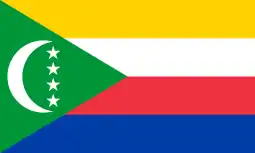 Comoros[67]
Comoros[67] Democratic Republic of the Congo[67]
Democratic Republic of the Congo[67] Republic of Congo[67]
Republic of Congo[67] Cook Islands[67]
Cook Islands[67] Costa Rica[67]
Costa Rica[67] Croatia[67]
Croatia[67] Cuba[67]
Cuba[67] Cyprus[67]
Cyprus[67] Czech Republic[67]
Czech Republic[67] Djibouti[67]
Djibouti[67] Dominica[67]
Dominica[67] Dominican Republic[67]
Dominican Republic[67] Ecuador[67]
Ecuador[67] Egypt[67]
Egypt[67] El Salvador[67]
El Salvador[67] Equatorial Guinea[67]
Equatorial Guinea[67]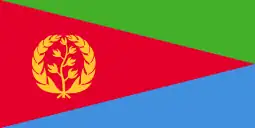 Eritrea[67]
Eritrea[67] Estonia[67]
Estonia[67]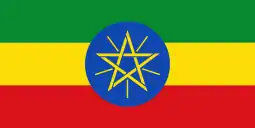 Ethiopia[67]
Ethiopia[67] Fiji[67]
Fiji[67] Gabon[67]
Gabon[67]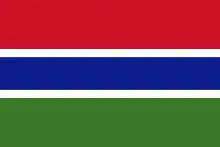 Gambia[67]
Gambia[67] Georgia[67]
Georgia[67] Ghana[67]
Ghana[67] Greece[67]
Greece[67] Grenada[67]
Grenada[67] Guinea[67]
Guinea[67]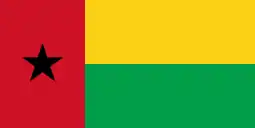 Guinea-Bissau[67]
Guinea-Bissau[67] Guyana[67]
Guyana[67] Honduras[69]
Honduras[69] Hungary[67]
Hungary[67] Indonesia[67]
Indonesia[67] Iran[67]
Iran[67] Iraq[67]
Iraq[67] Ivory Coast[67]
Ivory Coast[67] Jamaica[67]
Jamaica[67] Jordan[70]
Jordan[70] Kazakhstan[67]
Kazakhstan[67] Kenya[67]
Kenya[67] Kiribati[67]
Kiribati[67] Kuwait[67]
Kuwait[67]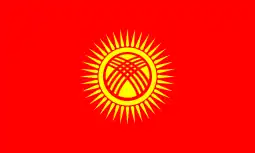 Kyrgyzstan[67]
Kyrgyzstan[67] Laos[67]
Laos[67] Latvia[67]
Latvia[67] Lebanon[67]
Lebanon[67] Lesotho[67]
Lesotho[67] Liberia[67]
Liberia[67] Libya[67]
Libya[67] Lithuania[67]
Lithuania[67] Luxembourg[67]
Luxembourg[67] Madagascar[67]
Madagascar[67] Malawi[67]
Malawi[67] Malaysia[67]
Malaysia[67] Maldives[67]
Maldives[67] Mali[67]
Mali[67]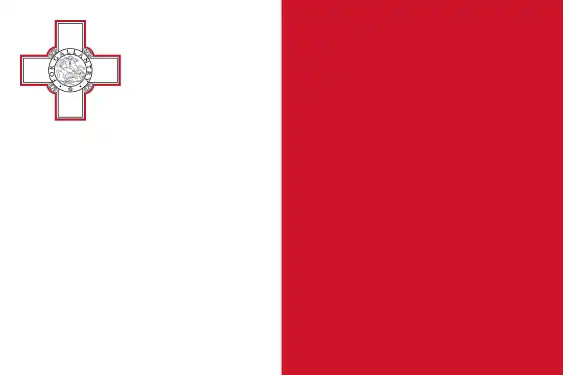 Malta[67]
Malta[67]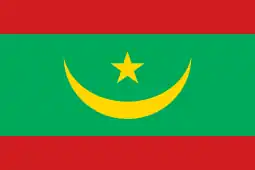 Mauritania[67]
Mauritania[67] Mauritius[71]
Mauritius[71] Micronesia[67]
Micronesia[67] Moldova[67]
Moldova[67] Mongolia[67]
Mongolia[67] Montenegro[67]
Montenegro[67] Morocco[67]
Morocco[67]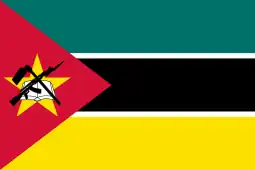 Mozambique[67]
Mozambique[67]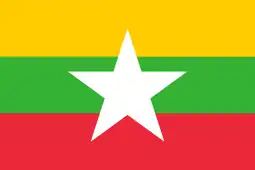 Myanmar[67]
Myanmar[67]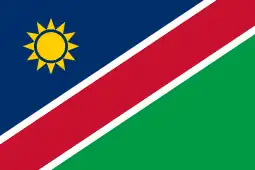 Namibia[67]
Namibia[67] Nepal[67]
Nepal[67] New Zealand[67]
New Zealand[67] Nicaragua[67]
Nicaragua[67] Niger[67]
Niger[67] Nigeria[67]
Nigeria[67] Niue[67]
Niue[67] North Macedonia[67]
North Macedonia[67] Oman[67]
Oman[67] Pakistan[67]
Pakistan[67]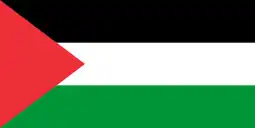 Palestine[67]
Palestine[67] Panama[67]
Panama[67] Papua New Guinea[67]
Papua New Guinea[67] Peru[67]
Peru[67] Philippines[67] (to exit in 2024)[72]
Philippines[67] (to exit in 2024)[72] Poland[67]
Poland[67] Portugal[67]
Portugal[67] Qatar[67]
Qatar[67] Romania[67]
Romania[67] Russia[67]
Russia[67]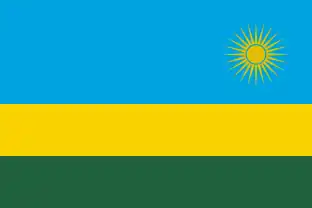 Rwanda[71]
Rwanda[71] Samoa[67]
Samoa[67] São Tomé and Príncipe[73]
São Tomé and Príncipe[73] Saudi Arabia[67]
Saudi Arabia[67] Senegal[71]
Senegal[71] Serbia[67]
Serbia[67] Seychelles[67]
Seychelles[67] Sierra Leone[67]
Sierra Leone[67] Singapore[67]
Singapore[67] Slovakia[67]
Slovakia[67] Slovenia[67]
Slovenia[67] Solomon Islands[67]
Solomon Islands[67] Somalia[67]
Somalia[67]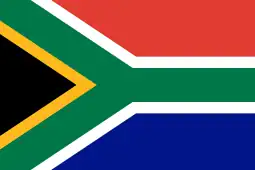 South Africa[67]
South Africa[67] South Korea[67]
South Korea[67] South Sudan[67]
South Sudan[67] Sri Lanka[67]
Sri Lanka[67] Sudan[67]
Sudan[67] Suriname[67]
Suriname[67] Syria[67]
Syria[67] Tajikistan[67]
Tajikistan[67]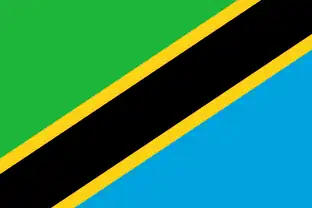 Tanzania[67]
Tanzania[67] Thailand[67]
Thailand[67]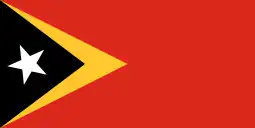 Timor-Leste[67]
Timor-Leste[67] Togo[67]
Togo[67] Tonga[67]
Tonga[67] Trinidad and Tobago[67]
Trinidad and Tobago[67] Tunisia[67]
Tunisia[67] Turkey[67]
Turkey[67] Turkmenistan[67]
Turkmenistan[67] Uganda[67]
Uganda[67]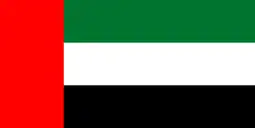 United Arab Emirates[67]
United Arab Emirates[67] Uruguay[67]
Uruguay[67] Uzbekistan[67]
Uzbekistan[67] Vanuatu[67]
Vanuatu[67] Venezuela[67]
Venezuela[67] Vietnam[67]
Vietnam[67] Yemen[67]
Yemen[67] Zambia[67]
Zambia[67] Zimbabwe[67]
Zimbabwe[67]
Observers
Countries considering joining in belt and road initiative:
Withdrew
Financing
Asian Infrastructure Investment Bank (AIIB)
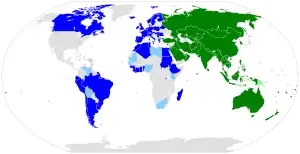 Prospective members (regional)
Members (regional)
Prospective members (non-regional)
Members (non-regional) |
The Asian Infrastructure Investment Bank, first proposed in October 2013, is a development bank dedicated to lending for infrastructure projects. As of 2015, China announced that over one trillion yuan (US$160 billion) of infrastructure-related projects were in planning or construction.[83]
The primary goals of AIIB are to address the expanding infrastructure needs across Asia, enhance regional integration, promote economic development and improve public access to social services.[84]
The Articles of Agreement (the legal framework) of AIIB were signed in Beijing on 29 June 2015. The proposed bank has an authorized capital of $100 billion, 75% of which will come from Asia and Oceania. China will be the single largest stakeholder, holding 26.63% of voting rights. The board of governors is AIIB's highest decision-making body.[85] The bank began operation on 16 January 2016, and approved its first four loans in June.[86]
Silk Road Fund
In November 2014, CCP leader Xi Jinping announced a US$40 billion development fund, which would be separate from the banks and not part of the CPEC investment. The Silk Road Fund would invest in businesses rather than lend money to the projects. The Karot Hydropower Project, 50 km (31 mi) from Islamabad, Pakistan, is the first project.[87]
China Investment Corporation
China Investment Corporation supports the BRI by investing in its infrastructure projects, participating in other BRI-related development funds, and assisting Chinese corporations with foreign mergers and acquisitions.[88]: 124
CIC's domestic subsidiary Central Huijin indirectly supports the BRI through its support of domestic financial institutions, such as policy banks or state-owned commercial banks, which in turn fund BRI projects.[88]: 124
Debt sustainability
In 2017, China joined the G20 Operational Guidelines for Sustainable Financing and in 2019 to the G20 Principles for Quality Infrastructure Investment. The Center for Global Development described China's New Debt Sustainability Framework as "virtually identical" to the World Bank's and IMF's own debt sustainability framework.[89][90]
China is the largest bilateral lender in the world.[91] Loans are backed by collateral such as rights to a mine, a port or money.[4]
This policy has been alleged by the U.S. Government to be a form of "Debt-Trap Diplomacy"; however, the term itself has come under scrutiny as analysts and researchers have pointed out that there is no evidence to prove that China is deliberately aiming to do debt trap diplomacy.[92] Research from Deborah Brautigam, an international political economy professor at Johns Hopkins University, and Meg Rithmire, an associate professor at Harvard Business School, have disputed the allegations of Debt Trap Diplomacy by China and pointed out that "Chinese banks are willing to restructure the terms of existing loans and have never actually seized an asset from any country, much less the port of Hambantota". They argued that it was 'long overdue' for people to know the truth and not to have it be "willfully misunderstood".[93]
For China itself, a report from Fitch Ratings doubts Chinese banks' ability to control risks, as they do not have a good record of allocating resources efficiently at home. This may lead to new asset quality problems for Chinese banks where most funding is likely to originate.[94] Additionally, two state-owned banks oversee China's foreign loans and development.
It has been suggested by some scholars that critical discussions about an evolving BRI and its financing needs transcend the "debt-trap" debate. This concerns the networked nature of financial centers and the vital role of advanced business services (e.g. law and accounting) that bring agents and sites into view (such as law firms, financial regulators, and offshore centers) that are generally less visible in geopolitical analysis, but vital in the financing of BRI.[95]
The COVID-19 pandemic has stopped work on some projects, while some have been scrapped; focus has been brought on projects that were already of questionable economic viability before the pandemic. Many of the loans agreed upon are in or nearing technical default, as many debtor countries reliant on exporting commodities have seen a slump in demand for them. Some debtor countries have started to negotiate to defer payments falling due.[4] In particular, the African continent owes an estimated $145 billion, much of which involves BRI projects, with $8bn falling due in 2020.
In April 2020, in light of the pandemic, the Group of 20 decided to freeze debt payments for countries that would struggle to pay them. Interest on Chinese loans continued to accrue during the freeze. In June 2020, Chinese leader Xi Jinping decided to cancel interest-free loans for certain African countries. Since 2000, these types of loans have accounted for 2 to 3 percent of total loans China has issued to African countries. Furthermore, foreign aid is a controversial topic in China due to it having its own areas with significant poverty.[96]
Infrastructure networks
The Belt and Road Initiative is about improving the physical infrastructure through land corridors that roughly equate to the old Silk Road. The Silk Road, or Silk Roads, has proven to be a productive but at the same time elusive concept, increasingly used as an evocative metaphor.[97] With China's 'Belt and Road Initiative', it has found fresh invocations and audiences.[98] These are the belts in the name, and there is also a maritime silk road.[99] Infrastructure corridors spanning some 60 countries, primarily in Asia and Europe but also including Oceania and East Africa, will cost an estimated US$4–8 trillion.[100][101] The initiative has been contrasted with the two US-centric trading arrangements, the Trans-Pacific Partnership and the Transatlantic Trade and Investment Partnership.[101] The initiative projects receive financial support from the Silk Road Fund and the Asian Infrastructure Investment Bank while they are technically coordinated by the B&R Summit Forum. The land corridors include:[99]
- The New Eurasian Land Bridge, which runs from Western China to Western Russia through Kazakhstan, and includes the Silk Road Railway through China's Xinjiang Autonomous Region, Kazakhstan, Russia, Belarus, Poland and Germany.
- Another corridor will run from Northern China through Mongolia to the Russian Far East. The Russian government-established Russian Direct Investment Fund and China's China Investment Corporation, a Chinese sovereign wealth fund, partnered in 2012 to create the Russia-China Investment Fund, which concentrates on opportunities in bilateral integration.[102][103]
- The China–Central Asia–West Asia Corridor, which will run from Western China to Turkey.
- The China-Indochina Peninsula economic corridor, which will run from Southern China to Singapore.
- The Trans-Himalayan Multi-dimensional Connectivity Network, which will turn Nepal from a landlocked to a land-linked country.
- The China–Pakistan Economic Corridor (CPEC) (Chinese:中国-巴基斯坦经济走廊; Urdu: پاكستان-چین اقتصادی راہداری) which is also classified as "closely related to the Belt and Road Initiative",[104] a US$62 billion collection of infrastructure projects throughout Pakistan[105][106][107] which aims to rapidly modernize Pakistan's transportation networks, energy infrastructure, and economy.[106][107][108][109] On 13 November 2016, CPEC became partly operational when Chinese cargo was transported overland to Gwadar Port for onward maritime shipment to Africa and West Asia.[110] CPEC and Gwadar port infrastructure is particularly significant because it opens routes independent of the Malacca strait.[111]: 99
This kind of connectivity is the focus of BRI efforts because China's significant economic growth has been supported by exports and the overland import of major quantities of raw materials and intermediate components.[111]: 98 By 2022, China had built cross-border highways and expressway networks to almost every nearby region.[111]: 99 It also built direct rail service, the usage of which surged after the COVID-19 pandemic congested air freight and sea shipping, and hampered port access.[111]: 99
Silk Road Economic Belt
China's leader Xi Jinping visited Astana, Kazakhstan, and Southeast Asia in September and October 2013, and proposed jointly building a new economic area, the Silk Road Economic Belt (SREB) (Chinese: 丝绸之路经济带).[112] The "belt" includes countries on the original Silk Road through Central Asia, West Asia, the Middle East, and Europe. The initiative would create a cohesive economic area by building both hard infrastructure such as rail and road links and soft infrastructure such as trade agreements and a common commercial legal structure with a court system to police the agreements.[11] It would increase cultural exchanges and expand trade.
Besides a zone largely analogous to the historical Silk Road, an expansion includes South Asia and Southeast Asia. The BRI is important from the Southeast Asian perspective because, with the exception of Singapore, Southeast Asian countries require significant infrastructure investment to advance their development.[113]: 210
Many of the countries in this belt are also members of the China-led Asian Infrastructure Investment Bank (AIIB).
Three belts are proposed. The North belt would go through Central Asia and Russia to Europe. The Central belt passes through Central Asia and West Asia to the Persian Gulf and the Mediterranean. The South belt runs from China through Southeast Asia and South Asia and on to the Indian Ocean through Pakistan. The strategy will integrate China with Central Asia through Kazakhstan's Nurly Zhol infrastructure program.[114]
21st Century Maritime Silk Road
The "21st Century Maritime Silk Road" (Chinese:21世纪海上丝绸之路), or just the Maritime Silk Road, is the sea route 'corridor.'[11] It is a complementary initiative aimed at investing and fostering collaboration in Southeast Asia, Oceania and Africa through several contiguous bodies of water: the South China Sea, the South Pacific Ocean, and the wider Indian Ocean area.[115][116][117] It was first proposed in October 2013 by Xi Jinping in a speech to the Indonesian Parliament.[118] As with the Silk Road Economic Belt initiative, most member countries have joined the Asian Infrastructure Investment Bank.
The maritime Silk Road runs with its links from the Chinese coast to the south via Hanoi to Jakarta, Singapore and Kuala Lumpur through the Strait of Malacca via the Sri Lankan Colombo opposite the southern tip of India via Malé, the capital of the Maldives, to the East African Mombasa, from there to Djibouti, then through the Red Sea over the Suez Canal into the Mediterranean, there via Haifa, Istanbul and Athens to the Upper Adriatic to the northern Italian junction of Trieste with its international free port and its rail connections to Central Europe and the North Sea.


According to estimates in 2019, the land route of the Silk Road remains a niche project and the bulk of the Silk Road trade continues to be carried out by sea. The reasons are primarily due to the cost of container transport. The maritime Silk Road is also considered to be particularly attractive for trade because, in contrast to the land-based Silk Road leading through the sparsely populated Central Asia, there are on the one hand far more states on the way to Europe and, on the other hand, their markets, development opportunities, and population numbers are far larger. In particular, there are many land-based links such as the Bangladesh-China-India-Myanmar Corridor (BCIM). Due to the attractiveness of this now subsidized sea route and the related investments, there have been major shifts in the logistics chains of the shipping sector in recent years.[119] Due to its unique geographical location, Myanmar is viewed to be playing a pivotal role for China's BRI projects.[120]
From the Chinese point of view, Africa is important as a market, raw material supplier and platform for the expansion of the new Silk Road – the coasts of Africa should be included. In Kenya's port of Mombasa, China has built a rail and road connection to the inland and to the capital Nairobi. To the northeast of Mombasa, a large port with 32 berths including an adjacent industrial area including infrastructure with new traffic corridors to South Sudan and Ethiopia is being built. A modern deep-water port, a satellite city, an airfield and an industrial area are being built in Bagamoyo, Tanzania. Further towards the Mediterranean, the Teda Egypt special economic zone is being built near the Egyptian coastal town of Ain Sochna as a joint Chinese-Egyptian project.[121][122]

 Container ship transiting the Suez Canal
Container ship transiting the Suez Canal Mombasa Port on Kenya's Indian Ocean coast
Mombasa Port on Kenya's Indian Ocean coast
As part of its Silk Road strategy, China is participating in large areas of Africa in the construction and operation of train routes, roads, airports and industry. In several countries such as Zambia, Ethiopia and Ghana, dams have been built with Chinese help. In Nairobi, China is funding the construction of the tallest building in Africa, the Pinnacle Towers. With the Chinese investments of 60 billion dollars for Africa announced in September 2018, on the one hand, sales markets are created and the local economy is promoted, and, on the other hand, African raw materials are made available for China.[123]
One of the Chinese bridgeheads in Europe is the port of Piraeus. Overall, Chinese companies are to invest a total of 350 million euros directly in the port facilities there by 2026 and a further 200 million euros in associated projects such as hotels.[124] In Europe, China wants to continue investing in Portugal with its deep-water port in Sines, but especially in Italy and there at the Adriatic logistics hub around Trieste. Venice, the historically important European endpoint of the maritime Silk Road, has less and less commercial importance today due to the shallow depth or silting of its port.[125]
The international free zone of Trieste provides in particular special areas for storage, handling and processing as well as transit zones for goods.[126][127] At the same time, logistics and shipping companies invest in their technology and locations in order to benefit from ongoing developments.[128][129] This also applies to the logistics connections between Turkey and the free port of Trieste, which are important for the Silk Road, and from there by train to Rotterdam and Zeebrugge. There is also direct cooperation, for example between Trieste, Bettembourg, and the Chinese province of Sichuan. While direct train connections from China to Europe, such as from Chengdu to Vienna overland, are partially stagnating or discontinued, there are (as of 2019) new weekly rail connections between Wolfurt or Nuremberg and Trieste or between Trieste, Vienna and Linz on the maritime Silk Road.[130][131]

There are also extensive intra-European infrastructure projects to adapt trade flows to current needs. Concrete projects (as well as their financing), which are to ensure the connection of the Mediterranean ports with the European hinterland, are decided among others at the annual China-Central-East-Europe summit, which was launched in 2012. This applies, for example, to the expansion of the Belgrade-Budapest railway line, the construction of the high-speed train between Milan, Venice and Trieste[132] and connections on the Adriatic-Baltic and Adriatic-North Sea axis. Poland, the Baltic States, Northern Europe and Central Europe are also connected to the maritime Silk Road through many links and are thus logistically networked via the Adriatic ports and Piraeus to East Africa, India and China. Overall, the ship connections for container transports between Asia and Europe will be reorganized. In contrast to the longer East Asia traffic via northwest Europe, the south-facing sea route through the Suez Canal towards the Trieste bridgehead shortens the transport of goods by at least four days.[133]
According to a study by the University of Antwerp, the maritime route via Trieste dramatically reduces transport costs. The example of Munich shows that the transport there from Shanghai via Trieste takes 33 days, while the northern route takes 43 days. From Hong Kong, the southern route reduces transport to Munich from 37 to 28 days. The shorter transport means, on the one hand, better use of the liner ships for the shipping companies and, on the other hand, considerable ecological advantages, also with regard to the lower CO2 emissions, because shipping is a heavy burden on the climate. Therefore, in the Mediterranean area, where the economic zone of the Liverpool–Milan Axis meets functioning railroad connections and deep-water ports, there are significant growth zones. Henning Vöpel, Director of the Hamburg World Economic Institute, recognizes that the North Range (i.e. transport via the North Sea ports to Europe) is not necessarily the one that will remain dominant in the medium term.[134]
From 2025, the Brenner Base Tunnel will also link the upper Adriatic with southern Germany. The port of Trieste, next to Gioia Tauro the only deep water port in the central Mediterranean for container ships of the seventh generation, is therefore a special target for Chinese investments. In March 2019, the China Communications Construction Company (CCCC) signed agreements to promote the ports of Trieste and Genoa. Accordingly, the port's annual handling capacity will be increased from 10,000 to 25,000 trains in Trieste (Trihub project) and a reciprocal platform to promote and handle trade between Europe and China will be created. It is also about logistics promotion between the North Adriatic port and Shanghai or Guangdong. This also includes a state Hungarian investment of 100 million euros for a 32 hectare logistics center and funding from the European Union of 45 million euros in 2020 for the development of the railway system in the port city.[135] Furthermore, the Hamburg port logistics group HHLA invested in the logistics platform of the port of Trieste (PLT) in September 2020.[136] In 2020, Duisburger Hafen AG (Duisport), the world's largest intermodal terminal operator, took a 15% stake in the Trieste freight terminal.[137] There are also further contacts between Hamburg, Bremen and Trieste with regard to cooperation.[138] There are also numerous collaborations in the Upper Adriatic, for example with the logistics platform in Cervignano.[139] In particular, the area of the upper Adriatic is developing into an extended intersection of the economic areas known as the Blue Banana and the Golden Banana. The importance of the free port of Trieste will continue to increase in the coming years due to the planned port expansion and the expansion of the Baltic-Adriatic railway axis (Semmering Base Tunnel, Koralm Tunnel and in the wider area Brenner Base Tunnel).[140][141][142]
Ice Silk Road
In addition to the Maritime Silk Road, Russia and China are reported to have agreed to jointly build an 'Ice Silk Road' along the Northern Sea Route in the Arctic, along a maritime route within Russian territorial waters.[143][144]
China COSCO Shipping Corp. has completed several trial trips on Arctic shipping routes, and Chinese and Russian companies are cooperating on oil and gas exploration in the area and to advance comprehensive collaboration on infrastructure construction, tourism and scientific expeditions.[144]
Digital Silk Road
The Digital Silk Road is a component of the BRI which includes digital technological development, the development of digital standards, and the expansion of digital infrastructure.[145]: 177–188 It aims to improve digital connectivity among participating countries with China as the main driver of the improved digital infrastructure with the benefit to China of reducing its reliance on American digital technology.[146]: 205 Like the BRI more broadly, the Digital Silk Road is not monolithic, instead involving many actors across both China's public and private sectors.[146]: 205
As part of the Digital Silk Road, China has built 34 terrestrial cables and dozens of underwater cables within 12 BRI countries in Asia, Africa, and Europe over the period 2017–2022.[145]: 180 Digital Silk Road-related investments in projects outside China reached an estimated US$79 billion as of 2018.[146]: 205
At the opening ceremony of the first Belt and Road Forum, Xi Jinping emphasized the importance of developing a Digital Silk Road through innovation in intelligent cities concepts, the digital economy, artificial intelligence, nanotechnology, and quantum computing.[145]: 77
The Eurasian Economic Union members cooperate with Digital Silk Road and have incorporated Chinese technologies into their digital infrastructure.[147]: 187
Super grid
The super grid project aims to develop six ultra high voltage electrical grids across China, Northeast Asia, Southeast Asia, South Asia, Central Asia and West Asia. The wind power resources of Central Asia would form one component of this grid.[148][149]
Additionally proposed
The Bangladesh–China–India–Myanmar Economic Corridor (BCIM) was proposed to run from southern China to Myanmar and was initially officially classified as "closely related to the Belt and Road Initiative".[104] Since the second Belt and Road Forum in 2019, BCIM has been dropped from the list of projects due to India's refusal to participate in the Belt and Road Initiative.[150]
Projects

China has engaged 149[152] countries and 30 international organizations in the BRI.[153] Infrastructure projects include ports, railways, highways, power stations, aviation and telecommunications.[154] The flagship projects include the China–Pakistan Economic Corridor, the Boten–Vientiane railway in Laos and Khorgas land port.[155][156][157]
| Construction | Investment | Construction | Investment |
| 31.9 | 24.3 | ||
| 23.2 | 14.1 | ||
| 17.5 | 10.4 | ||
| 16.8 | 9.4 | ||
| 15.8 | 8.1 | ||
| 15.3 | 7.9 | ||
| 14.7 | 7.6 | ||
Ecological issues
The Belt and Road initiative has attracted attention and concern from environmental organizations. A joint report by the World Wide Fund for Nature and HSBC argued that the BRI presents significant risks as well as opportunities for sustainable development. These risks include the overuse of natural resources, the disruption of ecosystems, and the emission of pollutants.[160] Coal-fired power stations, such as Emba Hunutlu power station in Turkey, are being built as part of BRI, thus increasing greenhouse gas emissions and global warming.[161] Glacier melting as a result of excess greenhouse gas emissions, endangered species preservation, desertification and soil erosion as a result of overgrazing and over farming, mining practices, water resource management, and air and water pollution as a result of poorly planned infrastructure projects are some of the ongoing concerns as they relate to Central Asian nations.[162]
A point of criticism of the BRI overall relates to the motivation of pollution and environmental degradation outsourcing to poorer nations, whose governments will disregard the consequences. In Serbia for instance, where pollution-related deaths already top Europe, the presence of Chinese-owned coal-powered plants have resulted in an augmentation in the country's dependency on coal, as well as air and soil pollution in some towns.[163]
According to German environmental group Urgewald, China's energy companies will make up nearly half of the new coal plant generation expected to go online in the next decade.[164] BRI coal projects accounted for as much as 42% of China's overseas investment in 2018,[165] and 93% of energy investments of the BRI-linked Silk Road Fund go to fossil fuels.[166]
The development of port infrastructure and increasing shipping associated with the maritime Belt and Road Initiative could impact sensitive species and marine habitats like coral reefs, mangroves, seagrass meadows and saltmarsh.[167]
In the opening of the 2017 Belt and Road Forum for International Cooperation, Chinese leader Xi Jinping stated that the BRI should "pursue the new vision of green development and a way of life and work that is green, low-carbon, circular and sustainable" in accordance with the goals of the 2030 Agenda for Sustainable Development.[168] A report by the United Nations Development Programme and CCIEE frame the BRI as an opportunity for environmental protection so long as it is used to provide green trade, finance, and investment in alignment with each country's implementation of the Sustainable Development Goals.[169] Other proposals include providing financial support for BRI member countries aiming to fulfill their contribution to the Paris Agreement, or providing resources and policy expertise to aid the expansion of renewable energy sources such as solar power in member countries.[170][171]
The Belt and Road Initiative International Green Development Coalition (BRIGC) was launched during the 2nd Belt and Road Forum for International Cooperation in April 2019.[54]: 60 It aims to "integrate sustainable development, in particular environmental sustainability, international standards and best practices, across the... priorities of the Belt and Road Initiative".[172][173][174] However, many scholars are unsure whether these best practices will be implemented. All BRI-specific environmental protection goals are outlined in informal guidelines rather than legally binding policies or regulations.[170][175] Moreover, member nations may choose to prioritize economic development over environmental protections, leading them to neglect to enforce environmental policy or lower environmental policy standards.[176] This could cause member nations to become "pollution havens" as Chinese domestic environmental protections are strengthened, though evidence of this currently happening is limited.[177][178]
In September 2021, China's paramount leader Xi Jinping announced that his country will "step up support" for developing countries to adopt "green and low-carbon energy" and will no longer be financing overseas coal-fired power plants.[179]
Human rights accusations
According to a report by American NGO China Labor Watch, there are widespread human rights violations concerning Chinese migrant workers sent abroad. The Chinese companies allegedly "commit forced labor" and usually confiscate the workers' passports once they arrive in another country, make them apply for illegal business visas and threaten to report their illegal status if they refuse to comply, refuse to give adequate medical care and rest, restrict workers' personal freedom and freedom of speech, force workers to overwork, cancel vacations, delay the payment of wages, publish deceptive advertisements and promises, browbeat workers with high amount of damages if they intend to leave, provide bad working and living conditions, punish workers who lead protests and so on.[180][181]
Reactions and criticism
Support
As of 2020, more than 130 countries had issued endorsements.[4] Moscow has been an early partner of China, and Russia and China now have altogether 150 common projects including natural gas pipelines and the Polar Silk Road. In March 2015, Russia's First Deputy Prime Minister Igor Shuvalov asserted that "Russia should not view the Silk Road Economic Belt as a threat to its traditional, regional sphere of influence […] but as an opportunity for the Eurasian Economic Union".
.jpg.webp)
In June 2016, China's leader Xi Jinping visited Poland and met with Poland's President Andrzej Duda and Prime Minister Beata Szydło.[182][183] Duda and Xi signed a declaration on strategic partnership in which they reiterated that Poland and China viewed each other as long-term strategic partners.[184]
.jpg.webp)
As a wealthy country, Singapore does not need massive external financing or technical assistance for domestic infrastructure building, but has repeatedly endorsed the BRI and cooperated in related projects in a quest for global relevance and to strengthen economic ties with BRI recipients. It is also one of the largest investors in the project. Furthermore, there is a strategic defensive factor: making sure a single country is not the single dominant factor in Asian economics.[185]
While the Philippines historically has been closely tied to the United States, China sought its support for the BRI in terms of the quest for dominance in the South China Sea. The Philippines adjusted its policy in favor of Chinese claims in the South China Sea under President Rodrigo Duterte.[186]
In 2017, Yanis Varoufakis, the former Greek Minister of Finance, wrote in Project Syndicate that his experience with the Belt and Road Initiative has been highly encouraging.[187] He remarked that the Chinese authorities managed to combine their sense of self-interest with a patient investment attitude and a genuine commitment to negotiate over and over again, in order to achieve a mutually advantageous agreement.[187]
In April 2019 and during the second Arab Forum for Environment and Development, China engaged in an array of partnerships called "Build the Belt and Road, Share Development and Prosperity" with 18 Arab countries. The general stand of African countries sees BRI as a tremendous opportunity for independence from foreign aid and influence.[188]
Greece, Croatia, and 14 other Eastern European countries are already dealing with China within the framework of the BRI. In March 2019, Italy was the first member of the Group of Seven nations to join the BRI. The new partners signed a Memorandum of Understanding worth €2.5 billion across an array of sectors such as transport, logistics, and port infrastructure.[189]
Despite initially criticizing BRI, the former Malaysian Prime Minister Mahathir Mohamad pledged support for the BRI project in 2019. He stated that he was fully in support of the Belt and Road Initiative and that his country would benefit from BRI. "Yes, the Belt and Road idea is great. It can bring the land-locked countries of Central Asia closer to the sea. They can grow in wealth and their poverty reduced," Mahathir said.[190]
Russian political scientist Sergey Karaganov, who is considered close to Russian President Vladimir Putin, has advocated for a united Sino-Russian strategy to unify a Eurasian bloc. He argues that the Eurasian Economic Union (EEU) and China's Belt and Road Initiative will work together to promote economic integration throughout the region.[191]
Opposition
Some observers and skeptics, mainly from non-participant countries, including the United States, interpret it as a plan for a Sinocentric international trade network.[192][193] In response the United States, Japan, and Australia had formed a counter initiative, the Blue Dot Network in 2019, followed by the G7's Build Back Better World initiative in 2021.[194][195]
The United States proposes a counter-initiative called the "Free and Open Indo-Pacific strategy" (FOIP). US officials have articulated the strategy as having three pillars: security, economics, and governance.[196] At the beginning of June 2019, there has been a redefinition of the general definitions of "free" and "open" into four stated principles: respect for sovereignty and independence; peaceful resolution of disputes; free, fair, and reciprocal trade; and adherence to international rules and norms.[197]
Government officials in India have repeatedly objected to China's Belt and Road Initiative.[198] In particular, they believe the "China–Pakistan Economic Corridor" (CPEC) project ignores New Delhi's essential concerns about its sovereignty and territorial integrity.[199]
Former Malaysian prime minister Mahathir Mohamad had initially found the terms of BRI to be too harsh for most countries and recommended countries avoid joining the BRI, but has changed his stance since.[200][201]
Mixed
Vietnam historically has been at odds with China, so it has been indecisive about supporting or opposing BRI.[202] In December 2023, Vietnam and China agreed a number of cooperation documents, including a "Plan on cooperation in promoting connectivity between the “Two Corridors, One Belt” framework and the “Belt and Road” initiative between the Government of Việt Nam and the Government of China.[203]
South Korea has tried to develop the "Eurasia Initiative" (EAI) as its own vision for an east–west connection. In calling for a revival of the ancient Silk Road, the main goal of President Park Geun-hye was to encourage a flow of economic, political, and social interaction from Europe through the Korean Peninsula. Her successor, President Moon Jae-in announced his own foreign policy initiative, the "New Southern Policy" (NSP), which seeks to strengthen relations with Southeast Asia.[204]
While Italy and Greece have joined the Belt and Road Initiative, other European countries have voiced ambivalent opinions. German chancellor Angela Merkel declared that the BRI "must lead to a certain reciprocity, and we are still wrangling over that bit". In January 2019 French president Emmanuel Macron said, "the ancient Silk Roads were never just Chinese … New roads cannot go just one way."[189] European Commission Chief Jean-Claude Juncker and Japanese Prime Minister Shinzo Abe signed an infrastructure agreement in Brussels in September 2019 to counter China's Belt and Road Initiative and link Europe and Asia to coordinate infrastructure, transport, and digital projects.[205][206]
In 2018, the premier of the south-eastern Australian state of Victoria, Daniel Andrews, signed a memorandum of understanding on the Belt and Road Initiative to establish infrastructure ties and further relations with China.[207][208] Home Affairs Minister Peter Dutton described the BRI as "a propaganda initiative from China" that brings an "enormous amount of foreign interference", while arguing that "Victoria needs to explain why it is the only state in the country that has entered into this agreement". Prime Minister Scott Morrison said Victoria was stepping into federal government policy territory, stating "We didn't support that decision at the time [the Victoria State Government and the National Development and Reform Commission of the People's Republic of China] made [the agreement]. National interest issues on foreign affairs are determined by the federal government, and I respect their jurisdiction when it comes to the issues they're responsible for, and it's always been the usual practice for states to respect and recognise the role of the federal government in setting foreign policy". In April 2021, Foreign Minister Marise Payne declared Australia would pull out of the Belt and Road Initiative, cancelling Victoria's agreements signed with China, and pulling out of the "Belt and Road" initiative completely.[209][208][210][211] The federal government's decision to veto the deal reflected the increasingly soured relationship between the Australian Government and the Chinese Government, after China's alleged attempts to employ economic coercion[212] in response to the Australian Government's support for an inquest into the origins of COVID-19,[213] as well as the Australian Government's decision to support the US in several regional disputes opposing China, such as the issue of Taiwan[214] or the South China Sea.[215]
Accusations of neo-imperialism and debt-trap diplomacy
Accusations
Some, including Western governments,[216] have accused the Belt and Road Initiative of being a form of neo-colonialism, due to what they allege is China's practice of debt-trap diplomacy to fund the initiative's infrastructure projects.[217] The concept of Chinese "Debt Trap Diplomacy" was first coined by an Indian think tank, the New Delhi-based Centre for Policy Research, before being picked up and expanded on by papers by two Harvard students, which subsequently gained media attention in the mainstream press.[218]
China contends that the initiative has provided markets for commodities, improved prices of resources, and thereby reduced inequalities in exchange, improved infrastructure, created employment, stimulated industrialization, and expanded technology transfer, thereby benefiting host countries.[219]
Tanzanian President John Magufuli said the loan agreements of BRI projects in his country were "exploitative and awkward".[220] He said Chinese financiers set "tough conditions that can only be accepted by mad people," because his government was asked to give them a guarantee of 33 years and an extensive lease of 99 years on a port construction. Magufuli said Chinese contractors wanted to take the land as their own but his government had to compensate them for drilling the project construction.[221]
Indian commentator S. K. Chatterji considers debt traps an economic dimension of China's salami slice strategy.[222] According to Chatterji, China's sovereignty slicing tactic dilutes the sovereignty of the target nations mainly using the debt trap. An example provided is Beijing pressuring Tajikistan to handover 1,158 km2 territory, which still owes China US$1.2bn out of a total US$2.9bn of debt. Other nations with a similar risk of sovereignty slicing are Pakistan, Madagascar, Mongolia, Maldives, Kyrgyzstan, Montenegro, Sri Lanka, and Laos which have borrowed large sums from China.[222]
In May 2021, DRC's President Félix Tshisekedi called for a review of mining contracts signed with China by his predecessor Joseph Kabila,[223] in particular the Sicomines multibillion-dollar 'minerals-for-infrastructure' agreement.[224][225][226] China's plans to link its western Xinjiang province to Gwadar in the Balochistan province of Pakistan with its US$500m investment in the Gwadar Port has met resistance from local fishermen protesting against Chinese trawlers and illegal fishing.[227][228]
Rebuttals
Deborah Bräutigam, a professor at the School of Advanced International Studies (SAIS) at Johns Hopkins University, described the debt-trap diplomacy theory as a "meme" that became popular due to "human negativity bias" based on anxiety about the rise of China.[19] A 2019 research paper by Bräutigam revealed that most of the debtor countries voluntarily signed on to the loans and had positive experiences working with China, and "the evidence so far, including the Sri Lankan case, shows that the drumbeat of alarm about Chinese banks' funding of infrastructure across the BRI and beyond is overblown" and "a large number of people have favorable opinions of China as an economic model and consider China an attractive partner for their development."[19] She said that the theory lacked evidence and criticized the media for promoting a narrative that "wrongfully misrepresents the relationship between China and the developing countries that it deals with," highlighting the fact that Sri Lanka owed more to Japan, the World Bank, and the Asian Development Bank than to China.[229] A 2018 China Africa Research Initiative report, co-authored by Bräutigam, remarked that "Chinese loans are not currently a major contributor to debt distress in Africa."[230]
According to New York-based economist Anastasia Papadimitriou, partnering countries are equally responsible when making deals with China. China's alleged "neocolonialist intentions" can be disproved by Sri Lanka's Hambantota Port project on the southeast coast of Sri Lanka, one of the most cited examples of "Debt-trap diplomacy".[231] After an analysis of the Belt and Road Initiative, Papadimitriou concludes that it is "not so much neocolonialism, rather it is economic regionalism".[231] Additionally, The Royal Institute of International Affairs, a London-based international affairs think tank, asserted that the debt crisis in Sri Lanka was unrelated to Chinese lending, but was instead caused mainly from "the misconduct of local elites and Western-dominated financial markets".[232] It was confirmed by Lowy Institute. A 2019 report by the Lowy Institute said that China had not engaged in deliberate actions in the Pacific which justified accusations of debt-trap diplomacy (based on contemporaneous evidence), and China had not been the primary driver behind rising debt risks in the Pacific; the report expressed concern about the scale of the country's lending, however, and the institutional weakness of Pacific states which posed the risk of small states being overwhelmed by debt.[233] A 2020 Lowy Institute article called Sri Lanka's Hambantota International Port the "case par excellence" for China's debt-trap diplomacy, but called the narrative a "myth" because the project was proposed by former Sri Lankan president Mahinda Rajapaksa, not Beijing.[234] The article added that Sri Lanka's debt distress was not caused by Chinese lending, but by "excessive borrowing on Western-dominated capital markets."[234]
The Rhodium Group, an American research company, analyzed Chinese debt renegotiations and concluded that China's leverage in them are often exaggerated and realistically limited in power. The findings of their study frequently showed an outcome in favor of the borrower rather than the supposedly predatory Chinese lender. The firm found that "asset seizures are a very rare occurrence" and that instead debt write-off was the most common outcome.[235]
Darren Lim, senior lecturer at the Australian National University, said that the "debt-trap diplomacy" claim was never credible, despite the Trump administration pushing it.[236] Dawn C. Murphy, Professor of International Security Studies at the U.S. Air War College, concludes that describing China's behavior as "neocolonialist" is an "exaggeration and misrepresentation".[237]
According to political scientist and researcher Zhexin Zhang, the overwhelming enthusiasm of developing countries in the Belt and Road Initiative, as seen first in the "Belt and Road Forum for International Cooperation" held in May 2017, is sufficient enough to invalidate the neo-colonialism argument.[238]
A March 2018 study released by the Center for Global Development, a Washington-based think tank, remarks that between 2001 and 2017, China restructured or waived loan payments for 51 debtor nations, the majority of BRI participants, without seizing state assets.[239] In September 2018, W. Gyude Moore, a former Liberian public works minister and senior policy fellow at the Center for Global Development, stated that "[t]he language of "debt-trap diplomacy" resonates more in Western countries, especially the United States, and is rooted in anxiety about China's rise as a global power rather than in the reality of Africa."[240] He also stated that "China has been a net positive partner with most African countries."[241] According to Pradumna Bickram Rana and Jason Ji Xianbai of Singapore's Nanyang Technological University, although there is a number of implementation issues confronting the Belt and Road Initiative mostly due to the COVID-19 Pandemic, China's alleged debt-trap diplomacy "more myth than reality".[242] While they acknowledge that various countries are facing difficulties in paying their debts to China, they highlight China's willingness to help these countries restructure their debt through forgiving policies, such as partial debt relief.[242] In eleven cases, China postponed loans for indebted countries, one being Tonga.[236]
Writing in 2023, academic Süha Atatüre states that United States opposition to the Belt and Road Initiative stems from the fact that it lacks the capacity to implement a rival project.[243]: 40
London School of Economics Professor Keyu Jin writes that the claim that China leads borrowers into a debt trap is misleading.[50]: 280 Jin observes that the majority of BRI countries' debt is owed to international organizations or private Western institutions like hedge funds, rather than to China.[50]: 280–281 Jin also writes that China has written off many of its loans and also provided debt relief to borrowers.[50]: 281
Belt and Road educational community
Along with policy coordination, facilities connectivity, unimpeded trade and financial integration, people-to-people bonds are among the five major goals of BRI.[244] BRI educational component implies mutual recognition of qualifications, academic mobility and student exchanges, coordination on education policy, life-long learning, and development of joint study programmes.[245][246] To this end, Xi Jinping announced plan to allocate funds for additional 30000 scholarships for SCO citizens and 10000 scholarships for the students and teachers along the Road.[247] Among the BRI cooperation priorities is also strengthening people-to-people ties through academic mobility, research cooperation, and student exchanges.[248] Since the beginning of the BRI, China has occupied a key role in shaping how academic, and skilled migration in general, develops along the BRI and increased efforts to attract and retain foreign talents.[248]
The University Alliance of the Silk Road centered at Xi'an Jiaotong University aims to support the Belt and Road initiative with research and engineering, and to foster understanding and academic exchange.[249][250] A French think tank, Fondation France Chine (France-China Foundation), focused on the study of the New Silk Roads, was launched in 2018. It is described as pro–Belt and Road Initiative and pro-China.[251][252]
See also
- Belt and Road Forum for International Cooperation
- Asia-Africa Growth Corridor
- Asian Highway Network
- Blue Banana
- Blue Dot Network – counter-initiative by the United States
- Build Back Better World – counter-initiative by the G7
- India-Middle East-Europe Economic Corridor
- China-Arab States Cooperation Forum
- Eurasian Land Bridge
- Eurasia Continental Bridge corridor
- Forum on China-Africa Cooperation
- Golden Banana
- International North–South Transport Corridor
- Southern Ocean – See Category: Ports and harbors of Antarctica
- List of ports and harbours of the Atlantic Ocean
- Ports of the Baltic Sea
- Channel Ports – ports and harbours of the English Channel
- List of North Sea ports – ports of the North Sea and its influent rivers
- List of coastal settlements of the Mediterranean Sea
- List of ports and harbors of the Arctic Ocean
- List of ports and harbours of the Indian Ocean
- List of ports and harbors of the Pacific Ocean
- List of the largest trading partners of China
- Maritime Silk Road
- Trans-Asian Railway
References
- ↑ "Wǒ wěi děng yǒuguān bùmén guīfàn "Yīdài Yīlù" chàngyì Yīngwén yì fǎ" 我委等有关部门规范"一带一路"倡议英文译法 [Regulations on the English translation of "Belt and Road" Initiative by our Commission and related departments]. ndrc.gov.cn (in Chinese (China)). National Development and Reform Commission. 11 May 2019. Archived from the original on 11 May 2019. Retrieved 7 January 2020.
- 1 2 王毅:着力打造西部陆海新通道 推动高质量共建"一带一路"-新华网 (in Chinese (China)). Xinhua News Agency. Archived from the original on 21 August 2019. Retrieved 21 August 2019.
- ↑ "Belt and Road Initiative". World Bank. Archived from the original on 19 February 2019. Retrieved 10 March 2019.
- 1 2 3 4 5 "The pandemic is hurting China's Belt and Road Initiative". The Economist. 4 June 2020. ISSN 0013-0613. Archived from the original on 19 December 2020. Retrieved 14 June 2020.
- ↑ Smith, Stephen (16 February 2021). "China's Major Country Diplomacy". Foreign Policy Analysis. 17 (2): orab002. doi:10.1093/fpa/orab002. Retrieved 21 September 2021.
- ↑ Nedopil, Christoph (2022). "Countries of the Belt and Road Initiative". Green Finance & Development Center, FISF Fudan University, Shanghai. Retrieved 26 April 2019.
- ↑ Caridi, Giorgio (2023). "BRI's Digital Silk Road and the EU: The Role of Innovation and Communication in the Italian Case Study". China and Eurasian Powers in a Multipolar World Order 2.0: Security, Diplomacy, Economy and Cyberspace. Mher Sahakyan. New York: Routledge. ISBN 978-1-003-35258-7. OCLC 1353290533.
- ↑ "President Xi proposes Silk Road economic belt". China Daily. Astana. Xinhua News Agency. 7 September 2013. Archived from the original on 9 March 2020.
- ↑ "President Xi Jinping Delivers Important Speech and Proposes to Build a Silk Road Economic Belt with Central Asian Countries". Ministry of Foreign Affairs of the People's Republic of China. 7 September 2013. Archived from the original on 17 October 2020.
- 1 2 "Chronology of China's Belt and Road Initiative". People's Daily. Xinhua News Agency. 24 June 2016. Archived from the original on 25 June 2016.
- 1 2 3 Kuo, Lily; Kommenda, Niko. "What is China's Belt and Road Initiative?". The Guardian. Archived from the original on 5 September 2018. Retrieved 5 September 2018.
- ↑ "China unveils action plan on Belt and Road Initiative". Gov.cn. Xinhua. 28 March 2015. Archived from the original on 17 April 2018. Retrieved 16 April 2018.
- ↑ "CrowdReviews Partnered with Strategic Marketing & Exhibitions to Announce: One Belt, One Road Forum". PR.com. 25 March 2019. Archived from the original on 30 April 2019. Retrieved 30 April 2019.
- ↑ "China's Belt and Road Initiative and the global chemical industry - KPMG Global". KPMG. 7 December 2021. Retrieved 1 August 2022.
- ↑ "Belt and Road Initiative". World Bank. Retrieved 1 August 2022.
- ↑ "Belt and Road Initiative to boost world GDP by over $7 trillion per annum by 2040". CEBR. 27 May 2019. Retrieved 1 August 2022.
- ↑ "New report on the Chinese Belt and Road Initiative predicts boost to global GDP "by over $7 trillion per annum"". CIOB. Retrieved 1 August 2022.
- ↑ "China's giant Belt and Road infrastructure push 'could pump $7 trillion into global GDP' by 2040". CityAM. 27 May 2019. Retrieved 1 August 2022.
- 1 2 3 Brautigam, Deborah (2 January 2020). "A critical look at Chinese 'debt-trap diplomacy': the rise of a meme". Area Development and Policy. 5 (1): 1–14. doi:10.1080/23792949.2019.1689828. ISSN 2379-2949. S2CID 214547742.
- ↑ "Chronology of China's Belt and Road Initiative". 24 June 2016.
- ↑ "News—Zhejiang Uniview Technologies Co., Ltd". en.uniview.com. Archived from the original on 11 May 2019. Retrieved 11 May 2019.
- ↑ 3=World Pensions Council (WPC) Firzli, Nicolas (February 2017). "World Pensions Council: Pension Investment in Infrastructure Debt: A New Source of Capital". World Bank blog. Archived from the original on 6 June 2017. Retrieved 13 May 2017.
{{cite news}}: CS1 maint: numeric names: authors list (link) - ↑ 3=World Pensions Council (WPC) Firzli, M. Nicolas J. (October 2015). "China's Asian Infrastructure Bank and the 'New Great Game'". Analyse Financière. Archived from the original on 29 January 2016. Retrieved 5 February 2016.
{{cite news}}: CS1 maint: numeric names: authors list (link) - ↑ General Office of Leading Group of Advancing the Building of the Belt and Road Initiative (2016). "Belt and Road in Big Data 2016". Beijing: the Commercial Press.
- ↑ "What to Know About China's Belt and Road Initiative Summit". Time. Archived from the original on 28 January 2018. Retrieved 30 January 2018.
- 1 2 Griffiths, James. "Just what is this One Belt, One Road thing anyway?". CNN. Archived from the original on 30 January 2018. Retrieved 30 January 2018.
- ↑ Marcus Hernig: Die Renaissance der Seidenstraße (2018).
- ↑ Wang, Xueqin; Wong, Yiik Diew; Li, Kevin X.; Yuen, Kum Fai (2021). "Transport research under Belt and Road Initiative: current trends and future research agenda". Transportmetrica A:Transport Science. 17 (4): 357–379. doi:10.1080/23249935.2020.1731008. hdl:10356/146535. S2CID 225499859.
- ↑ Folkman, Varg (30 July 2023). "Italy intends to leave China's Belt and Road Initiative, defense minister says". Politico Europe. Retrieved 30 July 2023.
- ↑ "Italy formally pulls out of China's Belt and Road Initiative". www.ft.com. Retrieved 11 December 2023.
- ↑ Bernhard Simon: Can The New Silk Road Compete With The Maritime Silk Road? in The Maritime Executive, 1 January 2020.
- ↑ Christoph He"Wie Amerika Chinas Neue Seidenstraße kontern will" Frankfurter Allgemeine Zeitung, 11 November 2019.
- ↑ Harry de Wilt: Is One Belt, One Road a China crisis for North Sea main ports? in World Cargo News, 17 December 2019.
- ↑ "Global shipping and logistic chain reshaped as China's Belt and Road dreams take off" in Hellenic Shipping News, 4 December 2018.
- ↑ Guido Santevecchi: Di Maio e la Via della Seta: «Faremo i conti nel 2020», siglato accordo su Trieste in Corriere della Sera, 5 November 2019.
- ↑ "Triest – Ein Welthafen für Bayern" Bayrische Staatszeitung, 30 November 2018.
- ↑ Marcus Hernig: Die Renaissance der Seidenstraße (2018), p 112.
- ↑ Andrew Wheeler: How Trieste could become the Singapore of the Adriatic in Asia Shipping Media – Splash247, 19 February 2019.
- ↑ Ethan Masood: How China is redrawing the map of world science. Nature. Band 569, Number 7754, May 2019, p 20–23
- ↑ Shen, Simon; Chan, Wilson (27 March 2018). "A comparative study of the Belt and Road Initiative and the Marshall plan". Palgrave Communications. 4 (1): 1–11. doi:10.1057/s41599-018-0077-9. ISSN 2055-1045. S2CID 4387434.
- ↑ "One Belt One Road" (PDF). 13 July 2017. Archived from the original (PDF) on 13 July 2017. Retrieved 22 March 2019.
- ↑ Rolland, Nadège (5 March 2019). "The Geo-Economic Challenge of China's Belt and Road Initiative". War on the Rocks. Archived from the original on 1 July 2019. Retrieved 1 July 2019.
- ↑ "BRI Instead of OBOR – China Edits the English Name of its Most Ambitious International Project". liia.lv. 28 July 2016. Archived from the original on 6 February 2017. Retrieved 15 August 2017.
- ↑ Smyth, Jamie. "Australia rejects China push on Silk Road strategy". Archived from the original on 8 April 2017., Financial Times, 22 March 2017
- ↑ Sempa, Francis P. (26 January 2019). "China and the World-Island". The Diplomat. Archived from the original on 26 January 2019. Retrieved 1 June 2019.
- ↑ Daly, Robert (12 March 2018). "China's Global Dreams Give Its Neighbors Nightmares". Foreign Policy. Archived from the original on 1 June 2019. Retrieved 1 June 2019.
- ↑ Stavridis, James (10 June 2019). "China and Russia Want to Control the 'World Island'". Bloomberg News. Archived from the original on 28 June 2019. Retrieved 23 June 2019.
- ↑ Rolland, Nadège (12 August 2019). "Mapping the footprint of Belt and Road influence operations". Sinopsis. Archived from the original on 25 September 2019. Retrieved 25 October 2019.
- ↑ Loh, Dylan M H (23 April 2021). "The 'Chinese Dream' and the 'Belt and Road Initiative': narratives, practices, and sub-state actors". International Relations of the Asia-Pacific. 21 (2): 167–199. doi:10.1093/irap/lcz018. hdl:10356/145543. ISSN 1470-482X.
- 1 2 3 4 Jin, Keyu (2023). The New China Playbook: Beyond Socialism and Capitalism. New York: Viking. ISBN 978-1-9848-7828-1.
- ↑ "China ready to reveal new directions with Armenia for construction of One Belt, One Road". armenpress.am. Retrieved 2 May 2021.
- ↑ Lendon, Brad; McCarthy, Simone (2 September 2023). "Blue-water ambitions: Is China looking beyond its neighborhood now it has the world's largest navy?". CNN. Retrieved 4 September 2023.
- ↑ Wooley, Alex; Zhang, Sheng; Fedorochko, Rory; Patterson, Sarina (25 July 2023). "Harboring Global Ambitions: China's Ports Footprint and Implications for Future Overseas Naval Bases". AidData. Retrieved 4 September 2023.
- 1 2 3 4 5 Shinn, David H.; Eisenman, Joshua (2023). China's Relations with Africa: a New Era of Strategic Engagement. New York: Columbia University Press. ISBN 978-0-231-21001-0.
- ↑ Šimalčík, Matej (2023). "China in the World". In Kironska, Kristina; Turscanyi, Richard Q. (eds.). Contemporary China: a New Superpower?. Routledge. ISBN 978-1-03-239508-1.
- ↑ Yu, Hong (November 2016). "Motivation behind China's 'One Belt, One Road' Initiatives and Establishment of the Asian Infrastructure Investment Bank". Journal of Contemporary China. 26 (105): 353–368. doi:10.1080/10670564.2016.1245894. S2CID 157430852.
- ↑ 一带一路领导班子"一正四副"名单首曝光. Ifeng (in Simplified Chinese). 5 April 2015. Archived from the original on 23 December 2015.
- ↑ "Vision and Actions on Jointly Building Silk Road Economic Belt and 21st-Century Maritime Silk Road". National Development and Reform Commission (NDRC), People's Republic of China. 28 March 2015. Archived from the original on 27 November 2018. Retrieved 28 November 2018.
- 1 2 Murphy, Dawn C. (2022). China's rise in the Global South : the Middle East, Africa, and Beijing's alternative world order. Stanford, California: Stanford University Press. p. 244. ISBN 978-1-5036-3060-4. OCLC 1249712936.
- 1 2 "国别 - 中国一带一路网". Belt and Road Portal (in Chinese). National Development and Reform Commission, Xinhua News Agency. Retrieved 13 July 2023.
- ↑ "Belt and Road Countries". Xinhua Silk Road Information Service. Retrieved 13 July 2023.
- ↑ Nedopil, Christoph. "Countries of the Belt and Road Initiative (BRI) – Green Finance & Development Center". Retrieved 19 June 2023.
- ↑ Steinert, Christoph; Weyrauch, David (24 March 2022). "Collecting data on Membership in the Belt and Road Initiative". Analyzing the BRI. Retrieved 13 July 2023.
- ↑ Sacks, David (24 March 2021). "Countries in China's Belt and Road Initiative: Who's In And Who's Out". Council on Foreign Relations. Retrieved 13 July 2023.
- ↑ O'Connor, Tom (12 January 2022). "Syria Officially Joins China's Belt and Road, Seeking Lifeline to Defy U.S. Sanctions". Newsweek. Retrieved 13 July 2023.
- ↑ "Argentina and China seal Silk Road deal". Deutsche Welle. 6 February 2022. Retrieved 13 July 2023.
- 1 2 3 4 5 6 7 8 9 10 11 12 13 14 15 16 17 18 19 20 21 22 23 24 25 26 27 28 29 30 31 32 33 34 35 36 37 38 39 40 41 42 43 44 45 46 47 48 49 50 51 52 53 54 55 56 57 58 59 60 61 62 63 64 65 66 67 68 69 70 71 72 73 74 75 76 77 78 79 80 81 82 83 84 85 86 87 88 89 90 91 92 93 94 95 96 97 98 99 100 101 102 103 104 105 106 107 108 109 110 111 112 113 114 115 116 117 118 119 120 121 122 123 124 125 126 127 128 129 130 131 132 133 134 135 136 137 138 139 140 141 142 143 144 145 146 Nedopil, Christoph. "Countries of the Belt and Road Initiative (BRI) – Green Finance & Development Center". Retrieved 30 July 2023.
- ↑ "【The Chinese Government and the Government of Burkina Faso Signed the Belt and Road Initiative Cooperation Document】-National Development and Reform Commission (NDRC) People's Republic of China". en.ndrc.gov.cn. Retrieved 30 July 2023.
- ↑ "What Will Honduras Gain By Establishing Ties With China?". The Dialogue. 24 March 2023.
- ↑ Chau, Jocelyn; Times, The Jordan. "China welcomes Jordan's active participation in Belt and Road Initiative". www.zawya.com. Retrieved 30 July 2023.
- 1 2 3 "China's Belt and Road Makes Inroads in Africa". The Diplomat. Archived from the original on 17 May 2023.
- ↑ "After Italy, Philippines To Exit China's Belt and Road Initiative". 4 November 2023.
- ↑ "China, Sao Tome and Principe vow to strengthen pragmatic cooperation". www.news.cn. Retrieved 30 July 2023.
- ↑ "China Invites North Korea to Belt and Road Summit".
- ↑ "China Wants Bhutan's Active Participation in the Belt and Road Initiative". thewire.in. Retrieved 30 July 2023.
- ↑ "BRI and Brazil's contribution to a more inclusive international system". global.chinadaily.com.cn.
- ↑ "The Goal Is to Join the Belt and Road — Interview with Luis Diego Monsalve, Colombian Ambassador to China". China Today.
- ↑ "China calls for cooperation with Denmark under Belt and Road initiative - Xinhua | English.news.cn". www.xinhuanet.com.
- ↑ "Ireland willing to deepen cooperation with China under BRI". ie.china-embassy.gov.cn.
- ↑ "San Marino and BRI". 21 August 2019.
- ↑ "Spain to boost cooperation with China under Belt & Road Initiative - Xinhua Silk Road". en.imsilkroad.com.
- ↑ "Why is Italy Withdrawing from China's Belt and Road Initiative?".
- ↑ Wan, Ming (16 December 2015). The Asian Infrastructure Investment Bank: The Construction of Power and the Struggle for the East Asian International Order. Palgrave Macmillan. p. 70. ISBN 9781137593887. Archived from the original on 3 February 2017. Retrieved 13 April 2016.
- ↑ "About AIIB Overview – AIIB". aiib.org. Archived from the original on 30 September 2017. Retrieved 1 October 2017.
- ↑ "Governance Overview – AIIB". aiib.org. Archived from the original on 30 September 2017. Retrieved 1 October 2017.
- ↑ "AIIB Turns 3, Reflects on Startup Growth – News – AIIB". aiib.org. Archived from the original on 17 January 2019. Retrieved 16 January 2019.
- ↑ "Commentary: Silk Road Fund's 1st investment makes China's words into practice". english.gov.cn. Archived from the original on 15 July 2015. Retrieved 15 July 2015.
- 1 2 Liu, Zongyuan Zoe (2023). Sovereign Funds: How the Communist Party of China Finances its Global Ambitions. The Belknap Press of Harvard University Press. doi:10.2307/jj.2915805. ISBN 9780674271913. JSTOR jj.2915805. S2CID 259402050.
- ↑ "Ocean of debt? Belt and Road and debt diplomacy in the Pacific". www.lowyinstitute.org. Retrieved 24 July 2021.
- ↑ "China's New Debt Sustainability Framework Is Largely Borrowed from the World Bank and IMF. Here's Why That Could Be a Problem". Center For Global Development. Retrieved 24 July 2021.
- ↑ Wingo, Scott. "How will China respond when low-income countries can't pay their debts?". Washington Post. WP Company. Retrieved 4 February 2021.
- ↑ "No evidence of China's 'debt-trap diplomacy', researchers and analysts say". South China Morning Post. 21 February 2021. Retrieved 20 July 2021.
- ↑ "The Chinese Debt Trap Is a Myth: The Narrative Wrongfully Portrays Both Beijing and the Developing Countries It Deals With. - Editorial - Faculty & Research - Harvard Business School". www.hbs.edu. Retrieved 20 July 2021.
- ↑ Peter Wells, Don Weinland, Fitch warns on expected returns from One Belt, One Road Archived 3 March 2017 at the Wayback Machine, Financial Times, 26 January 2017
- ↑ Lai, Karen P. Y.; Lin, Shaun; Sidaway, James D. (3 March 2020). "Financing the Belt and Road Initiative (BRI): research agendas beyond the "debt-trap" discourse" (PDF). Eurasian Geography and Economics. 61 (2): 109–124. doi:10.1080/15387216.2020.1726787. ISSN 1538-7216. S2CID 213846545.
- ↑ Sun, Yun (8 October 2015). "The domestic controversy over China's foreign aid and the implications for Africa". Brookings. Retrieved 8 April 2021.
- ↑ Wahlquist, Hakan (2020). "Albert Herrmann: A missing link in establishing the Silk Road as a concept for Trans-Eurasian networks of trade". Environment and Planning C: Politics and Space. 38 (5): 803–808. doi:10.1177/2399654420911410a. S2CID 220982093.
- ↑ "Walquist, Hakan. "Albert Herrmann: A missing link in establishing the Silk Road as a concept for Trans-Eurasian networks of trade" 38.5 (2020): 803–808."
- 1 2 Ramasamy, Bala; Yeung, Matthew; Utoktham, Chorthip; Duval, Yann (November 2017). "Trade and trade facilitation along the Belt and Road Initiative corridors" (PDF). ARTNeT Working Paper Series, Bangkok, ESCAP (172). Archived (PDF) from the original on 17 April 2018. Retrieved 17 April 2018.
- ↑ "Getting lost in 'One Belt, One Road'". 12 April 2016. Archived from the original on 14 April 2016. Retrieved 13 April 2016.
- 1 2 Our bulldozers, our rules Archived 23 December 2017 at the Wayback Machine, The Economist, 2 July 2016
- ↑ "China to step up Russian debt financing". China Daily. 9 May 2015. Archived from the original on 23 July 2018. Retrieved 23 July 2018.
- ↑ "Silk Road Economic Belt_China.org.cn". china.org.cn. Archived from the original on 15 March 2016. Retrieved 23 July 2018.
- 1 2 "Vision and Actions on Jointly Building Belt and Road". Xinhua News Agency. 29 March 2015. Archived from the original on 4 March 2016. Retrieved 28 April 2015.
- ↑ "CPEC investment pushed from $55b to $62b – The Express Tribune". 12 April 2017. Archived from the original on 15 May 2017. Retrieved 14 May 2017.
- 1 2 Hussain, Tom (19 April 2015). "China's Xi in Pakistan to cement huge infrastructure projects, submarine sales". McClatchy News. Islamabad: mcclatchydc. Archived from the original on 2 August 2017. Retrieved 16 May 2017.
- 1 2 Kiani, Khaleeq (30 September 2016). "With a new Chinese loan, CPEC is now worth $57bn". Dawn. Archived from the original on 20 November 2016. Retrieved 19 November 2016.
- ↑ "CPEC: The devil is not in the details". 23 November 2016. Archived from the original on 14 May 2017. Retrieved 14 May 2017.
- ↑ "Economic corridor: Chinese official sets record straight". The Express Tribune. 2 March 2015. Archived from the original on 2 August 2017. Retrieved 14 May 2017.
- ↑ Ramachandran, Sudha (16 November 2016). "CPEC takes a step forward as violence surges in Balochistan". Asia Times Online. Retrieved 19 November 2016.
- 1 2 3 4 Zhao, Suisheng (2023). The Dragon Roars Back: Transformational Leaders and Dynamics of Chinese Foreign Policy. Stanford, California: Stanford University Press. doi:10.1515/9781503634152. ISBN 978-1-5036-3088-8. OCLC 1331741429.
- ↑ "Xi Jinping Calls For Regional Cooperation Via New Silk Road". The Astana Times. Archived from the original on 7 November 2017. Retrieved 31 October 2017.
- ↑ Gerstl, Alfred (2023). "China in its Immediate Neighborhood". In Kironska, Kristina; Turscanyi, Richard Q. (eds.). Contemporary China: a New Superpower?. Routledge. ISBN 978-1-03-239508-1.
- ↑ "Integrating #Kazakhstan Nurly Zhol, China's Silk Road economic belt will benefit all, officials say". EUReporter. Archived from the original on 15 March 2017. Retrieved 14 March 2017.
- ↑ "Sri Lanka Supports China's Initiative of a 21st Century Maritime Silk Route". Archived from the original on 11 May 2015.
- ↑ Shannon Tiezzi, The Diplomat. "China Pushes 'Maritime Silk Road' in South, Southeast Asia". The Diplomat. Archived from the original on 1 May 2015. Retrieved 16 April 2015.
- ↑ "Reflections on Maritime Partnership: Building the 21st Century Maritime Silk Road". Archived from the original on 3 April 2015. Retrieved 16 April 2015.
- ↑ "Xi in call for building of new 'maritime silk road'". China Daily. Archived from the original on 2 March 2017. Retrieved 16 April 2015.
- ↑ Bernhard Simon: Die natürlichen Grenzen der Neuen Seidenstraße. Manager Magazin 5/2019, 2 May 2019; Bernhard Zand: China erobert das Wasser Der Spiegel, 9 September 2016; Global shipping and logistic chain reshaped as China's Belt and Road dreams take off in Hellenic Shipping News, 4 December 2018.
- ↑ Mark, Siusue; Overland, Indra; Vakulchuk, Roman (2020). "Sharing the Spoils: Winners and Losers in the Belt and Road Initiative in Myanmar". Journal of Current Southeast Asian Affairs. 39 (3): 381–404. doi:10.1177/1868103420962116. hdl:11250/2689628. S2CID 227179618.
- ↑ Johnny Erling: Chinas großer Sprung nach Afrika, Die Welt, 3 September 2018; Andreas Eckert: Mit Mao nach Daressalam, Die Zeit 28 March 2019, p 17.
- ↑ Harry G. Broadman "Afrika's Silk Road" (2007), pp 59.
- ↑ Andreas Eckert: "Mit Mao nach Daressalam" Die Zeit, 28 March 2019, p. 17.
- ↑ Zacharias Zacharakis: Chinas Anker in Europa Die Zeit, 8 May 2018.
- ↑ Andrea Rossini: Venezia, si incaglia la via della Seta. Porto off limits per le navi cinesi in TGR Veneto (RAI), 16 January 2020.
- ↑ Chinesen wollen im Hafen Triest investieren. Warenverkehr der Seidenstraße läuft übers Meer Die Presse 16 May 2017
- ↑ Thomas Fischer: Viele europäische Länder fürchten Chinas Einfluss. Portugal glaubt an die Seidenstrasse in Neue Zürcher Zeitung 6 December 2018
- ↑ Cosco investiert wieder in große MPP-Flotte. Hansa International Maritime Journal, 20 November 2018.
- ↑ Wolf D. Hartmann, Wolfgang Maennig, Run Wang: Chinas neue Seidenstraße. Frankfurt am Main 2017, S. 59; Chinesen wollen verstärkt im Hafen Triest investieren, In: Kleine Zeitung 16 May 2017; Marco Kauffmann Bossart: Chinas Seidenstrasse-Initiative bringt Griechenland Investitionen und Jobs. Zu welchem Preis? In: Neue Zürcher Zeitung 12 July 2018.
- ↑ P&O Ferrymasters Launches New Intermodal Services Linking Turkey To Rotterdam And Zeebrugge Hubs Via Trieste. in Hellenic Shipping News 8 January 2019; Hafen Triest stärkt Intermodal-Verbindungen nach Luxemburg in Verkehrsrundschau: 12 June 2019.
- ↑ "Hafen Triest nun mit Bahnverbindung nach Nürnberg" Industrie Magazin, 9 November 2020.
- ↑ "Italien will in schnellere Bahnverbindung Triest-Venedig investieren". stol.it.
- ↑ Gerald Pohl: Neue Seidenstraße: China drängt es nach Europa Die Presse, 17 September 2019; Hafen Triest auf Wachstumskurs: Neue Bahnverbindung nach Rostock. Der Trend, 17 October 2018; Frank Behling: Hafenzug Kiel–Triest. Von der Förde ans Mittelmeer. In: Kieler Nachrichten: 25 January 2017.
- ↑ Triest – Ein Welthafen für Bayern, In: Bayrische Staatszeitung 30 November 2018; Marcus Hernig: Die Renaissance der Seidenstraße (2018), p 112; Bruno Macaes: China's Italian advance threatens EU unity. Im Nikkei Asian Review 25 March 2019; Werner Balsen: Der neue Blick nach Europa – von Süden in DVZ, 10 July 2019; Alexandra Endres: Schifffahrt ist fürs Klima genau so schlimm wie Kohle, In: Die Zeit, 9 December 2019; Harry de Wilt: Is One Belt, One Road a China crisis for North Sea main ports? In: World Cargo News, 17 December 2019.
- ↑ "Trieste, ex Aquila venduta all'ungherese Adria Port" Il Piccolo, 18 December 2020.
- ↑ Matteo Bressan: Opportunities and challenges for BRI in Europe in Global Time, 2 April 2019; Andreas Deutsch: Verlagerungseffekte im containerbasierten Hinterlandverkehr (2014), p 143; Johnny Erling: Peking streckt die Hand nach italienischen Häfen aus Die Welt, 21 March 2019; Alexander Zwagerman: The eternal city welcomes the eternal Red Emperor: Italy's embrace of Beijing is a headache for its partners, Hong Kong Free Press, 31 March 2019; Guido Santevecchi: Di Maio e la Via della Seta: «Faremo i conti nel 2020», siglato accordo su Trieste in Corriere della Sera: 5 November 2019; Trieste to become Hungary's sea exit, The Budapest Business Journal, 21 June 2019; "Hamburger Hafenkonzern investiert groß in Triest" in Die Presse 29 September 2020; Linda Vierecke, Elisabetta Galla "Triest und die neue Seidenstraße" Deutsche Welle, 8 December 2020.
- ↑ "Logistica, il colosso Duisport acquisisce il 15% delle quote dell'Interporto di Trieste" Il Piccolo, 15 December 2020.
- ↑ "Verso il colosso Ue dei container Amburgo-Brema. Un faro su Trieste". Nord Est Economia. 31 January 2021.
- ↑ Veneziani, Italo (24 May 2021). "L'Interporto Cervignano è ora la banchina estesa del Porto di Trieste - TRIESTE.news".
- ↑ "RCG verstärkt Verbindung nach Triest" In: Dispo, 03.02.2021; "Zusätzliche Bahnverbindungen zwischen Triest und Nürnberg" In: Verkehrsrundschau 19.04.2021.
- ↑ "Hafen Triest nun mit Bahnverbindung nach Nürnberg". Das Österreichische Industriemagazin (in German).
- ↑ "Neue Seidenstraße: Das Mega-Projekt aus China". www.merkur.de. 14 June 2021.
- ↑ Suokas, J., China, Russia to build ‘Ice Silk Road’ along Northern Sea Route Archived 18 August 2018 at the Wayback Machine, GB Times, published 6 July 2017. Retrieved 10 March 2019
- 1 2 Henderson, Isaiah M. (18 July 2019). "Cold Ambition: The New Geopolitical Faultline". The California Review. Archived from the original on 8 February 2021. Retrieved 19 July 2019.
- 1 2 3 Parzyan, Anahit (2023). "China's Digital Silk Road: Empowering Capabilities for Digital Leadership in Eurasia". China and Eurasian Powers in a Multipolar World Order 2.0: Security, Diplomacy, Economy and Cyberspace. Mher Sahakyan. New York: Routledge. ISBN 978-1-003-35258-7. OCLC 1353290533.
- 1 2 3 Larissa Sciacovelli, Annita (2023). "Cybersecurity Challenges between the EU and China". China and Eurasian powers in a Multipolar World Order 2.0: Security, Diplomacy, Economy and Cyberspace. Mher Sahakyan. New York: Routledge. ISBN 978-1-003-35258-7. OCLC 1353290533.
- ↑ Parzyan, Anahit (2023). China and Eurasian Powers in a Multipolar World Order 2.0: Security, Diplomacy, Economy and Cyberspace. Mher Sahakyan. New York: Routledge. ISBN 978-1-003-35258-7. OCLC 1353290533.
- ↑ "China plans super-grid for clean power in Asia". Financial Times. 5 December 2017. Archived from the original on 2 December 2018. Retrieved 1 December 2018.
- ↑ Fairley, Peter (21 February 2019). "China's Ambitious Plan to Build the World's Biggest Supergrid". IEEE Spectrum: Technology, Engineering, and Science News. Archived from the original on 12 May 2019. Retrieved 11 May 2019.
- ↑ "China drops BCIM from BRI projects' list". Business Standard. 28 April 2019. Archived from the original on 28 October 2019. Retrieved 28 October 2019.
- ↑ Based on 《一帶一路規劃藍圖》 in Nanfang Daily
- ↑ WANG, Christoph NEDOPIL. "Countries of the Belt and Road Initiative (BRI) – Green Finance & Development Center".
- ↑ 已同中國簽訂共建一帶一路合作文件的國家一覽. BRI Official Website. 12 April 2019. Archived from the original on 8 February 2019. Retrieved 24 April 2019.
- ↑ "B&R interconnection witnesses great breakthroughs in 5-year development-Belt and Road Portal". eng.yidaiyilu.gov.cn. Archived from the original on 19 January 2019. Retrieved 19 January 2019.
- ↑ "Understanding China's BRI in Laos". www.businesstimes.com.sg. Retrieved 3 June 2021.
- ↑ "Can China Turn the Middle of Nowhere Into the Center of the World Economy?". The New York Times. 29 January 2019. ISSN 0362-4331. Retrieved 3 June 2021.
- ↑ "The BRI in Pakistan: China's flagship economic corridor | Merics". merics.org. 20 May 2020. Retrieved 3 June 2021.
- ↑ "China Global Investment Tracker". American Enterprise Institute and Heritage Foundation. Archived from the original on 30 March 2020. Retrieved 5 May 2020.
- ↑ Scissors, Derek (12 June 2019). "Facts on the BRI's Past and Present". The Belt and Road is Overhyped, Commercially (PDF). American Enterprise Institute. Archived (PDF) from the original on 1 March 2020. Retrieved 5 May 2020.
- ↑ "Greening the Belt and Road Initiative" (PDF).
- ↑ "China's Belt and Road Initiative Could Drive Warming to 2.7 Degrees". Yale E360. Archived from the original on 25 September 2019. Retrieved 25 September 2019.
- ↑ Hughes, Geoff, ed. (2019). Greening the Belt and Road Projects in Central Asia: A Visual Synthesis (PDF). Switzerland: Zoi Environment Network. Archived (PDF) from the original on 8 February 2021. Retrieved 9 March 2020.
- ↑ Vuksanovic, Vuk (16 July 2021). "China's Belt and Road Initiative Is Causing Environmental Damage in Serbia". Foreign Policy.
- ↑ Tabuchi, Hiroko (1 July 2017). "As Beijing Joins Climate Fight, Chinese Companies Build Coal Plants". The New York Times. ISSN 1553-8095. OCLC 1645522.
- ↑ Kuo, Lily (25 April 2019). "Belt and Road forum: China's 'project of the century' hits tough times". The Guardian. Beijing. ISSN 1756-3224. OCLC 60623878.
- ↑ Zhou, L.; Gilbert, S.; Wang, Y.; Muñoz Cabre, M.; Gallagher, K.P. (October 2018). "Moving the Green Belt and Road Initiative: From Words to Actions". Washington, DC: World Resources Institute.
{{cite journal}}: Cite journal requires|journal=(help) - ↑ Turschwell, Mischa P.; Brown, Christopher J.; Pearson, Ryan M.; Connolly, Rod M. (1 February 2020). "China's Belt and Road Initiative: Conservation opportunities for threatened marine species and habitats". Marine Policy. 112: 103791. doi:10.1016/j.marpol.2019.103791. ISSN 0308-597X. S2CID 212771175.
- ↑ "Full text of President Xi's speech at opening of Belt and Road forum - Xinhua | English.news.cn". www.xinhuanet.com. Archived from the original on 1 February 2018. Retrieved 19 October 2021.
- ↑ "A New Means to Transformative Global Governance Towards Sustainable Development | UNDP in China". UNDP. Retrieved 19 October 2021.
- 1 2 Coenen, Johanna; Bager, Simon; Meyfroidt, Patrick; Newig, Jens; Challies, Edward (2021). "Environmental Governance of China's Belt and Road Initiative". Environmental Policy and Governance. 31 (1): 3–17. doi:10.1002/eet.1901. ISSN 1756-9338. S2CID 225610730.
- ↑ Chen, Shi; Lu, Xi; Miao, Yufei; Deng, Yu; Nielsen, Chris P.; Elbot, Noah; Wang, Yuanchen; Logan, Kathryn G.; McElroy, Michael B.; Hao, Jiming (21 August 2019). "The Potential of Photovoltaics to Power the Belt and Road Initiative". Joule. 3 (8): 1895–1912. doi:10.1016/j.joule.2019.06.006. ISSN 2542-4351. S2CID 197671970.
- ↑ "The Belt and Road Initiative International Green Development Coalition". 9 October 2018. Archived from the original on 25 November 2020. Retrieved 24 September 2020.
- ↑ Treyer, Sébastien (23 September 2019). "Greening the Belt and Road Initiative". IDDR. Archived from the original on 20 December 2020. Retrieved 24 September 2020.
- ↑ Shepherd, Christian (5 June 2020). "China's Belt and Road urged to take green route". Financial Times. ISSN 0307-1766. Archived from the original on 17 December 2020. Retrieved 24 September 2020.
- ↑ Nakano, Jane (May 2019). "Greening or Greenwashing the Belt and Road Initiative?". www.csis.org. Retrieved 19 October 2021.
- ↑ Gamso, Jonas (2018). "Environmental policy impacts of trade with China and the moderating effect of governance". Environmental Policy and Governance. 28 (6): 395–405. doi:10.1002/eet.1807. ISSN 1756-9338. S2CID 158113385.
- ↑ Tracy, Elena F.; Shvarts, Evgeny; Simonov, Eugene; Babenko, Mikhail (2 January 2017). "China's new Eurasian ambitions: the environmental risks of the Silk Road Economic Belt". Eurasian Geography and Economics. 58 (1): 56–88. doi:10.1080/15387216.2017.1295876. ISSN 1538-7216. S2CID 157808832.
- ↑ Tian, Xu; Hu, Yunyi; Yin, Haitao; Geng, Yong; Bleischwitz, Raimund (1 November 2019). "Trade impacts of China's Belt and Road Initiative: From resource and environmental perspectives". Resources, Conservation and Recycling. 150: 104430. doi:10.1016/j.resconrec.2019.104430. ISSN 0921-3449. S2CID 202098591.
- ↑ "Why China's Promise to Stop Funding Coal Plants Around the World Is a Really Big Deal". Time. Retrieved 30 September 2021.
- ↑ "Silent Victims of Labor Trafficking: China's Belt and Road workers stranded overseas amid Covid-19 pandemic". China Labor Watch. 30 April 2021. Retrieved 4 October 2022.
- ↑ 方冰 (1 May 2021). "劳工组织:"一带一路"加剧海外中国劳工被强迫劳动". 美国之音. Retrieved 1 May 2021.
- ↑ "President Duda hopes Poland will become China's gateway to Europe". President.pl. 20 June 2016.
- ↑ "President Duda sends sympathy message to President Xi Jinping". Polish Press Agency. 3 February 2020.
- ↑ "Xi welcomes Chinese freight train to 'strategic partner' Poland". Reuters. 20 June 2016.
- ↑ Chan, Irene (September 2019). "Reversing China's Belt-and-Road Initiative—Singapore's Response to the BRI and Its Quest for Relevance". East Asia. 36 (3): 185–204. doi:10.1007/s12140-019-09317-7. ISSN 1096-6838. S2CID 203492432.
- ↑ De Castro, Renato Cruz (21 August 2019). "China's Belt and Road Initiative (BRI) and the Duterte Administration's Appeasement Policy: Examining the Connection Between the Two National Strategies". East Asia. 36 (3): 205–227. doi:10.1007/s12140-019-09315-9. ISSN 1096-6838. S2CID 202316018.
- 1 2 Varoufakis, Yanis (27 October 2017). "China is the Real Deal". Project Syndicate. Retrieved 17 December 2021.
- ↑ "China notes Africa's key BRI role ahead of forum in Beijing". Africa Times. 18 April 2019. Archived from the original on 23 June 2019. Retrieved 23 June 2019.
- 1 2 Ellyatt, Holly (27 March 2019). "Is Italy playing with fire when it comes to China?". CNBC. Archived from the original on 1 May 2019. Retrieved 23 June 2019.
- ↑ "'The Belt and Road Initiative is great': Malaysia PM Mahathir". Retrieved 30 July 2023.
- ↑ Karagamov, Sergey (26 October 2015). "The Promise of Eurasia". karaganov.ru (in Russian). Retrieved 22 February 2022.
- ↑ Compare: Chohan, Usman W. (7 July 2017), What Is One Belt One Road? A Surplus Recycling Mechanism Approach, SSRN 2997650,
It has been lauded as a visionary project among key participants such as China and Pakistan, but has received a critical reaction, arguably a poorly thought out one, in nonparticipant countries such as the United States and India (see various discussions in Ferdinand 2016, Kennedy and Parker 2015, Godement and Kratz, 2015, Li 2015, Rolland 2015, Swaine 2015).
- ↑ Compare: "Getting lost in 'One Belt, One Road'". Hong Kong Economic Journal. 12 April 2016. Archived from the original on 14 April 2016. Retrieved 13 April 2016.
Simply put, China is trying to buy friendship and political influence by investing massive amounts of money on infrastructure in countries along the 'One Belt, One Road'.
- ↑ "Explained: What is the Blue Dot network, on the table during Trump visit to India". Indian Express. 26 February 2020. Archived from the original on 26 February 2020. Retrieved 28 February 2020.
- ↑ Walden, Max (8 November 2019). "What is the Blue Dot Network and is it really the West's response to China's Belt and Road project?". ABC News. Archived from the original on 5 March 2020. Retrieved 28 February 2020.
- ↑ Diplomat, Prashanth Parameswaran, The. "Advancing Democracy in the US Free and Open Indo-Pacific Strategy". The Diplomat. Archived from the original on 25 April 2019. Retrieved 23 June 2019.
{{cite web}}: CS1 maint: multiple names: authors list (link) - ↑ "Ministry of US Defense. Indo-Pacific Report June 2019" (PDF). Archived (PDF) from the original on 26 June 2019. Retrieved 23 June 2019.
- ↑ "India refuses to support China's Belt and Road project at SCO meet". Hindustan Times. 30 November 2020. Retrieved 21 February 2022.
- ↑ "CPEC route through Kashmir could create tension with India: UN report". Hindustan Times. 22 April 2016. Archived from the original on 11 May 2019. Retrieved 28 May 2019.
- ↑ "China: Power and Prosperity -- Watch the full documentary". PBS. 22 November 2019. 16:13. Archived from the original on 30 October 2021. Retrieved 26 June 2021.
- ↑ "'The Belt and Road Initiative is great': Malaysia PM Mahathir". Channel News Asia. 26 April 2019. Archived from the original on 19 April 2022. Retrieved 5 August 2021.
- ↑ Di Lan, Ngo; Vu, Truong-Minh (September 2019). "The Sino-US-Vietnam Triangle in a Belt and Road Era". East Asia. 36 (3): 229–241. doi:10.1007/s12140-019-09318-6. ISSN 1096-6838. S2CID 211091110.
- ↑ "Việt Nam, China sign 36 cooperation documents on diplomacy, trade, defence & sea issues".
- ↑ Hwang, Balbina Y. (26 June 2019). "Northeast Asian Perspectives on China's Belt Road Initiative: the View from South Korea". East Asia. 36 (2): 129–150. doi:10.1007/s12140-019-09310-0. ISSN 1096-6838. S2CID 198492001.
- ↑ Eva, Joanna (30 September 2019). "Japan and the EU sign infrastructure deal to rival China's Belt and Road". European Views. Archived from the original on 2 January 2020. Retrieved 2 January 2020.
- ↑ "Japan and EU ink infrastructure cooperation pact in counter to China's Belt and Road". The Japan Times. 28 September 2019. ISSN 0447-5763. Archived from the original on 2 January 2020. Retrieved 2 January 2020.
- ↑ "Memorandum of Understanding between the state of Victoria in Australia and the People's Republic of China" (PDF). 2014. Archived (PDF) from the original on 1 June 2020. Retrieved 19 June 2020.
- 1 2 Taylor, Josh (2 May 2020). "China's belt and road initiative: what is it and why is Victoria under fire for its involvement?". The Guardian. ISSN 0261-3077. Archived from the original on 20 June 2020. Retrieved 20 June 2020.
- ↑ "Federal government rips up Victoria's controversial Belt and Road agreement with China". SBS News. Special Broadcasting Service. 21 April 2021. Retrieved 21 April 2021.
- ↑ "Turnbull plays down Belt and Road fears". SBS News. Archived from the original on 20 June 2020. Retrieved 20 June 2020.
- ↑ "The pandemic is hurting China's Belt and Road Initiative". The Economist. 4 June 2020. ISSN 0013-0613. Archived from the original on 13 June 2020. Retrieved 14 June 2020.
- ↑ "Summary of Australia's involvement in disputes currently before the World Trade Organization". Australian Government, Department of Foreign Affairs and Trade. The Australian Government, Department of Foreign Affairs and Trade. Retrieved 18 December 2021.
- ↑ Dziedzic, Stephen (20 May 2020). "Australia started a fight with China over an investigation into COVID-19 — did it go too hard?". ABC News. Retrieved 18 December 2021.
- ↑ "Australia would help US defend Taiwan". Taipei Times. 14 November 2021. Retrieved 18 December 2021.
- ↑ Thayer, Carl (27 July 2020). "Australia Abandons Its Neutrality on the South China Sea Maritime Disputes". The Diplomat. Retrieved 18 December 2021.
- ↑ Today, ISS (21 February 2018). "ISS Today: Lessons from Sri Lanka on China's 'debt-trap diplomacy'". Daily Maverick. Archived from the original on 15 September 2018. Retrieved 15 September 2018.
- ↑ "Belt and Road: colonialism with Chinese characteristics". www.lowyinstitute.org. Retrieved 8 April 2021.
- ↑ Brautigam, D. (2020). "A critical look at Chinese 'debt-trap diplomacy': The rise of a meme". Area Development and Policy. 5 (1): 1–14. doi:10.1080/23792949.2019.1689828. S2CID 214547742.
- ↑ Blanchard, Jean-Marc F. (8 February 2018). "Revisiting the Resurrected Debate About Chinese Neocolonialism". The Diplomat. Archived from the original on 23 November 2018. Retrieved 23 November 2018.
- ↑ Tanzania President terms China's BRI port project exploitative Archived 7 November 2020 at the Wayback Machine (July 2019)
- ↑ "China is thinking twice about lending to Africa". The Economist. Archived from the original on 18 December 2020. Retrieved 12 December 2020.
- 1 2 Chatterji, S. K. (22 October 2020). "Wider connotations of Chinese 'salami slicing'". Asia Times. Archived from the original on 1 November 2020.
- ↑ "DRC's Tshisekedi has secured his power base: now it's time to deliver". The Conversation. 27 October 2021.
- ↑ "The Belt and Road Bubble Is Starting to Burst". Foreign Policy. 27 June 2018.
- ↑ "Congo Reviews $6.2 Billion China Mining Deal as Criticism Grows". Bloomberg. 28 September 2021.
- ↑ "China Cash Flowed Through Congo Bank to Former President's Cronies". Bloomberg. 28 November 2021.
- ↑ "Pakistan detains five Chinese trawlers for alleged illegal fishing". TheGuardian.com. 13 July 2021.
- ↑ Bokhari, Farhan; Parkin, Benjamin (19 December 2021). "Pakistan seeks to calm protesters at Chinese Belt and Road port project". Financial Times.
- ↑ Brautigam, Deborah; Rithmire, Meg (6 February 2021). "The Chinese 'Debt Trap' Is a Myth". The Atlantic.
- ↑ "The Path Ahead: The 7th Forum on China-Africa Cooperation" (PDF). China Africa Research Initiative. Retrieved 25 July 2021.
- 1 2 Papadimitriou, Anastasia (20 October 2019). "China's Belt and Road Initiative: Is it Truly Neocolonialist?". World Mind –American University's undergraduate policy magazine.
- ↑ "Debunking the Myth of 'Debt-trap Diplomacy'". Chatham House – International Affairs Think Tank. 19 August 2020. Retrieved 18 December 2021.
- ↑ Rajah, Roland; Dayant, Alexandre; Pryke, Jonathan (21 October 2019). "Ocean of debt? Belt and Road and debt diplomacy in the Pacific". Lowy Institute.
- 1 2 Hameiri, Shahar (9 September 2020). "Debunking the myth of China's "debt-trap diplomacy"". The Interpreter. Lowy Institute.
- ↑ "New Data on the "Debt Trap" Question". Rhodium Group. Retrieved 18 December 2021.
- 1 2 Needham, Kirsty (2 May 2019). "Data doesn't support Belt and Road debt trap claims". The Sydney Morning Herald. Retrieved 18 December 2021.
- ↑ Murphy, Dawn C. (2022). China's rise in the Global South : the Middle East, Africa, and Beijing's alternative world order. Stanford, California: Stanford University Press. p. 158. ISBN 978-1-5036-3060-4. OCLC 1249712936.
- ↑ Zhang, Zhexin (1 January 2018). "The Belt and Road Initiative: China's New Geopolitical Strategy?". China Quarterly of International Strategic Studies. 04 (3): 327–343. doi:10.1142/S2377740018500240. ISSN 2377-7400.
- ↑ Hurley, John; Morris, Scott; Portelance, Gailyn (March 2018), Examining the Debt Implications of the Belt and Road Initiative from a Policy Perspective (PDF), Center for Global Development
- ↑ Moore, W. Gyude (17 September 2018). "The language of "debt-trap diplomacy" reflects Western anxieties, not African realities". Quartz. Retrieved 21 July 2021.
- ↑ "China Offers Debt Relief, But Most African Countries Borrow Elsewhere". Voice of America. Retrieved 21 July 2021.
- 1 2 Rana, Pradumna Bickram; Xianbai, Jason Ji (4 November 2020). "BRI's 'Debt Trap Diplomacy': Reality or Myth?". S. Rajaratnam School of International Studies. Singapore. p. 3.
- ↑ Atatüre, Süha (2023). "The US and China as Main Powers in Multipolar World Order 2.0". China and Eurasian Powers in a Multipolar World Order 2.0: Security, Diplomacy, Economy and Cyberspace. Mher Sahakyan. New York: Routledge. ISBN 978-1-003-35258-7. OCLC 1353290533.
- ↑ "Vision And Actions On Jointly Building Silk Road Economic Belt And 21st-Century Maritime Silk Road". Belt and Road portal. 30 March 2015. Retrieved 15 February 2021.
- ↑ "Education Action Plan for the Belt and Road Initiative". Belt and Road portal. 12 October 2017. Retrieved 15 February 2021.
- ↑ Leskina, Natalia; Sabzalieva, Emma (4 January 2021). "Constructing a Eurasian higher education region: "Points of correspondence" between Russia's Eurasian Economic Union and China's Belt and Road Initiative in Central Asia". Eurasian Geography and Economics. 62 (5–6): 716–744. doi:10.1080/15387216.2020.1866997. ISSN 1538-7216. S2CID 234122770.
- ↑ "Xi proposes a 'new Silk Road' with Central Asia". www.chinadaily.com.cn. Retrieved 15 February 2021.
- 1 2 Richter, Eva L (1 September 2020). "Economic Development through Migration: Facilitating Skilled Migration to China through the Belt and Road Initiative". The Chinese Journal of Comparative Law. 8 (2): 331–350. doi:10.1093/cjcl/cxaa021. ISSN 2050-4802.
- ↑ Ma, Lie (11 April 2016). "University alliance seeks enhanced education co-op along Silk Road". China Daily. Archived from the original on 18 September 2016. Retrieved 18 September 2016.
- ↑ Yojana, Sharma (12 June 2015). "University collaboration takes the Silk Road route". University World News. Archived from the original on 19 August 2016. Retrieved 18 September 2016.
- ↑ "OFNRS – Observer, analyser et conseiller". OFNRS. Archived from the original on 30 June 2019. Retrieved 30 December 2019.
- ↑ "Follow the New Silk Road: China's growing trail of think tanks and lobbyists in Europe". Corporate Europe Observatory. 4 August 2019. Archived from the original on 7 November 2020. Retrieved 14 September 2020.
Further reading
| Library resources about Belt and Road Initiative |
- Blanchard, Jean-Marc F. (2021). "Belt and Road Initiative (BRI) Blues: Powering BRI Research Back on Track to Avoid Choppy Seas". Journal of Chinese Political Science. 26: 235–255. doi:10.1007/s11366-020-09717-0. S2CID 230718702.
- Cai, Peter. Understanding China's belt and road initiative (Lowy Institute 2017) online Archived 18 August 2021 at the Wayback Machine.
- Calabrese, L. (2019): Making the Belt and Road Initiative work for Africa. London: Overseas Development Institute.
- Calabrese, L. (2019): China and global development: what to read ahead of the Belt and Road Forum. London: Overseas Development Institute.
- Chansok, L. (2019): The Belt and Road Initiative and Cambodia's Infrastructure Connectivity Development: A Cambodian Perspective. Cheung FM and Hong Y-Y (eds) Regional Connection under the Belt and Road Initiative. The prospects for Economic and Financial Cooperation. London: Routledge, pp. 134–163.
- Chen, Yaowen, et al. "Does the Connectivity of the Belt and Road Initiative Contribute to the Economic Growth of the Belt and Road Countries?." Emerging Markets Finance and Trade 55.14 (2019): 3227–3240.
- Contessi, Nicola P. (2016). "Central Asia in Asia: Charting Growing Transregional Linkages". Journal of Eurasian Studies. 7: 3–13. doi:10.1016/j.euras.2015.11.001.
- Chaudhuri (周士理), Debasish (2018). "Book Review: Revitalising the Silk Road—China's Belt and Road Initiative by Richard T. Griffiths". China Report. 54 (2): 248–251. doi:10.1177/0009445518761158. S2CID 220052430. online review.
- He, Baogang. "Chinese expanded perceptions of the region and its changing attitudes toward the Indo-Pacific: A hybrid vision of the institutionalization of the Indo-Pacific." East Asia 35.2 (2018): 117–132.
- Ito, Asei. "China's Belt and Road Initiative and Japan's Response: from Non-participation to Conditional Engagement." East Asia 36.2 (2019): 115–128.
- Jones, Lee; Zeng, Jinghan (2019). "Understanding China's 'Belt and Road Initiative': Beyond 'grand strategy' to a state transformation analysis". Third World Quarterly. 40 (8): 1415–1439. doi:10.1080/01436597.2018.1559046. S2CID 159210202.
- Kohli, Harinder S., Johannes F. Linn, and Leo M. Zucker, eds. China's Belt and Road Initiative: Potential Transformation of Central Asia and the South Caucasus (Sage, 2019).
- Lai, Karen P.Y., Shaun Lin and James D. Sidaway. "Financing the Belt and Road Initiative (BRI): Research agendas beyond the "debt-trap" discourse." Eurasian Geography and Economics61.2 (2020): 109–124. online.
- Liu, Hong; Lim, Guanie (2019). "The Political Economy of a Rising China in Southeast Asia: Malaysia's Response to the Belt and Road Initiative". Journal of Contemporary China. 28 (116): 216–231. doi:10.1080/10670564.2018.1511393. hdl:10220/46634. S2CID 158773685.
- Lin, Shaun and Carl Grundy-Warr. "Navigating Sino-Thai 'rocky' bilateral ties: The geopolitics of riverine trade in the Greater Mekong Subregion." Environment and Planning C: Politics and Space 38.5 (2020): 826–833.
- Lin, Shaun, Naoko Shimazu and James D. Sidaway. "Theorising from the Belt and Road Initiative (一带一路)." Asia Pacific Viewpoint
- Lin, Shaun, James D. Sidaway and Woon Chih Yuan. "Reordering China, respacing the world: Belt and Road Initiative (一带一路) as an emergent geopolitical culture." The Professional Geographer 71.3 (2019): 507–522. online.
- Mark, Siusue; Overland, Indra; Vakulchuk, Roman (2020). "Sharing the Spoils: Winners and Losers in the Belt and Road Initiative in Myanmar". Journal of Current Southeast Asian Affairs. 39 (3): 381–404. doi:10.1177/1868103420962116. hdl:11250/2689628. S2CID 227179618.
- Park, Albert. Which Countries Have Benefited the Most from China's Belt and Road Initiative?. (No. 2019-32. HKUST Institute for Emerging Market Studies, 2019) online.
- Scissors, Derek. "The Belt and Road is Overhyped, Commercially." AEI Paper & Studies (American Enterprise Institute, 2019) online
- Shah, Abdur Rehman (2019). "China's Belt and Road Initiative". Asian Survey. 59 (3): 407–428. doi:10.1525/as.2019.59.3.407. S2CID 197792826.
- Sidaway, James D.; Rowedder, Simon C.; Woon, Chih Yuan; Lin, Weiqiang; Pholsena, Vatthana (2020). "Introduction: Research agendas raised by the Belt and Road Initiative". Environment and Planning C: Politics and Space. 38 (5): 795–802. doi:10.1177/2399654420911410. S2CID 220987313.
- Sidaway, James D. and Chih Yuan Woon. "Chinese narratives on "One Belt, One Road" (一带一路) in geopolitical and imperial contexts." The Professional Geographer 69.4 (2017) 591-603. online.
- Belt and Road Initiative: China's Most Important Project, 14 July 2022
- Smith, Stephen N. (2021). "China's "Major Country Diplomacy": Legitimation and Foreign Policy Change". Foreign Policy Analysis. 17 (2). doi:10.1093/fpa/orab002.
- Tjia, Yin-nor Linda (2020). "The Unintended Consequences of Politicization of the Belt and Road's China-Europe Freight Train Initiative". The China Journal. 83: 58–78. doi:10.1086/706743. S2CID 213765633.
- Vakulchuk, Roman; Overland, Indra (2018). "China's Belt and Road Initiative through the lens of Central Asia". Regional Connection under the Belt and Road Initiative (PDF). pp. 115–133. doi:10.4324/9780429467172-5. ISBN 9780429467172. S2CID 189990559.
- Wahlquist, Hakan. "Albert Herrmann: A missing link in establishing the Silk Road as a concept for Trans-Eurasian networks of trade" Environment and Planning C: Politics and Space 38.5 (2020): 803–808.
- Winter, Tim (2020). "Geocultural Power: China's Belt and Road Initiative". Geopolitics. 26 (5): 1376–1399. doi:10.1080/14650045.2020.1718656. S2CID 213814993.
- World Pensions Council (WPC) policy paper: Chinese Revolution Could Lure Overseas Investment, Dow Jones Financial News, 12 October 2015.
- The New York Times – "Behind China's $1 Trillion Plan", 13 May 2017.
External links
![]() Media related to One Belt, One Road at Wikimedia Commons
Media related to One Belt, One Road at Wikimedia Commons
